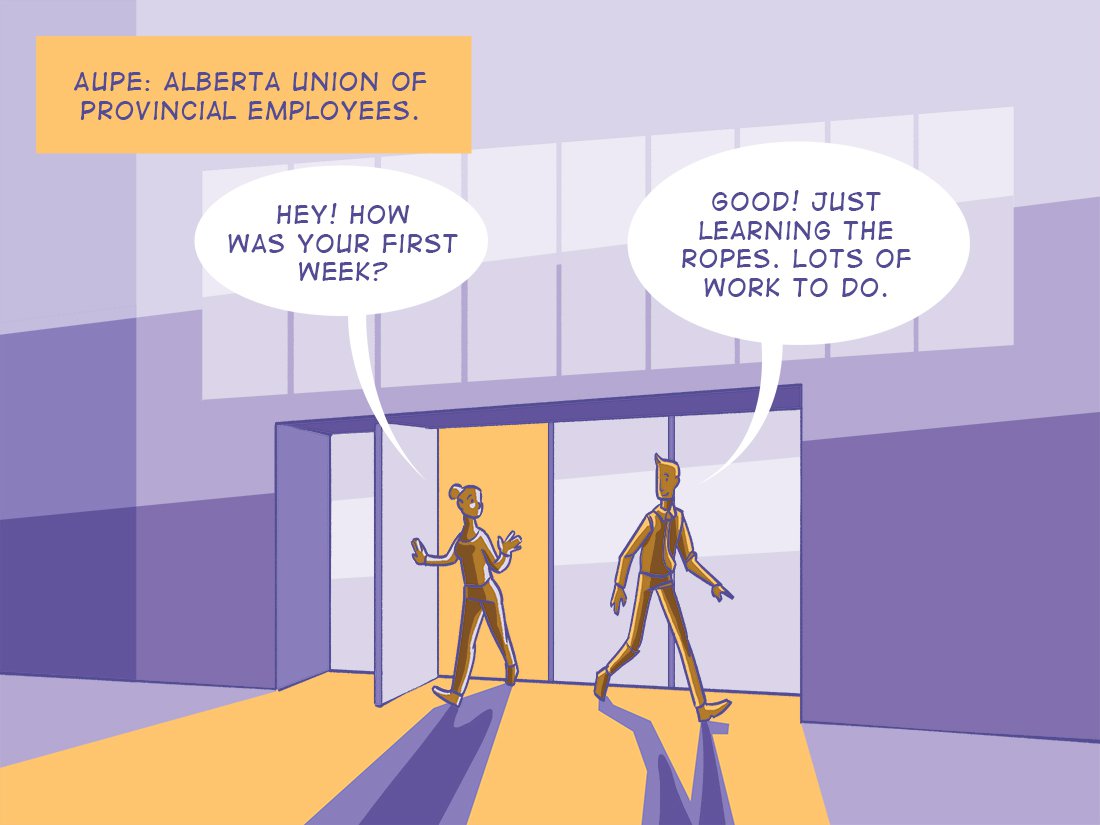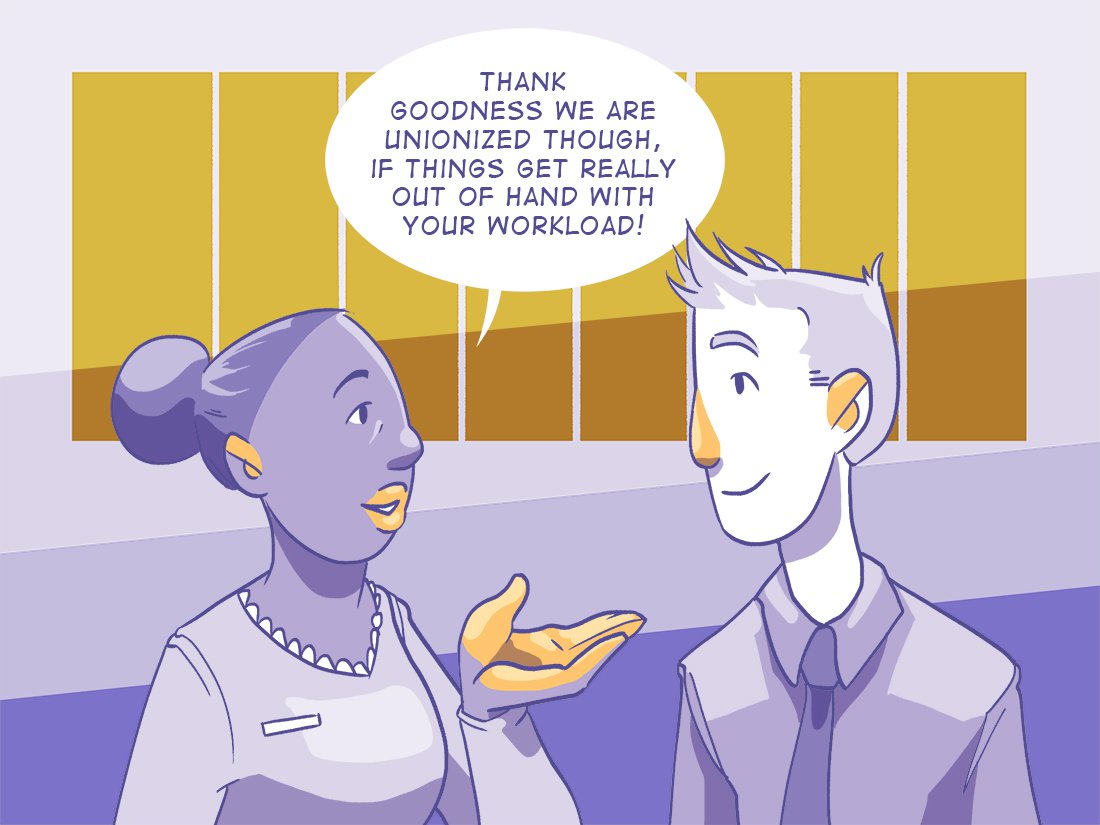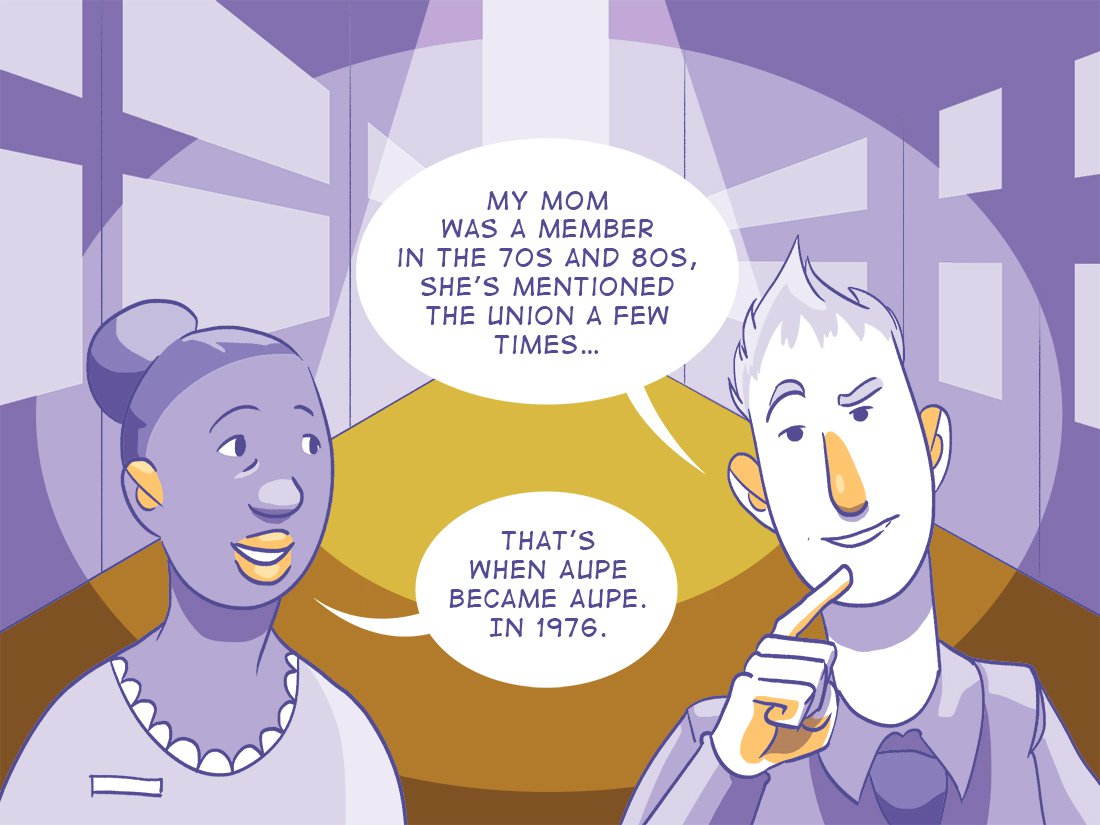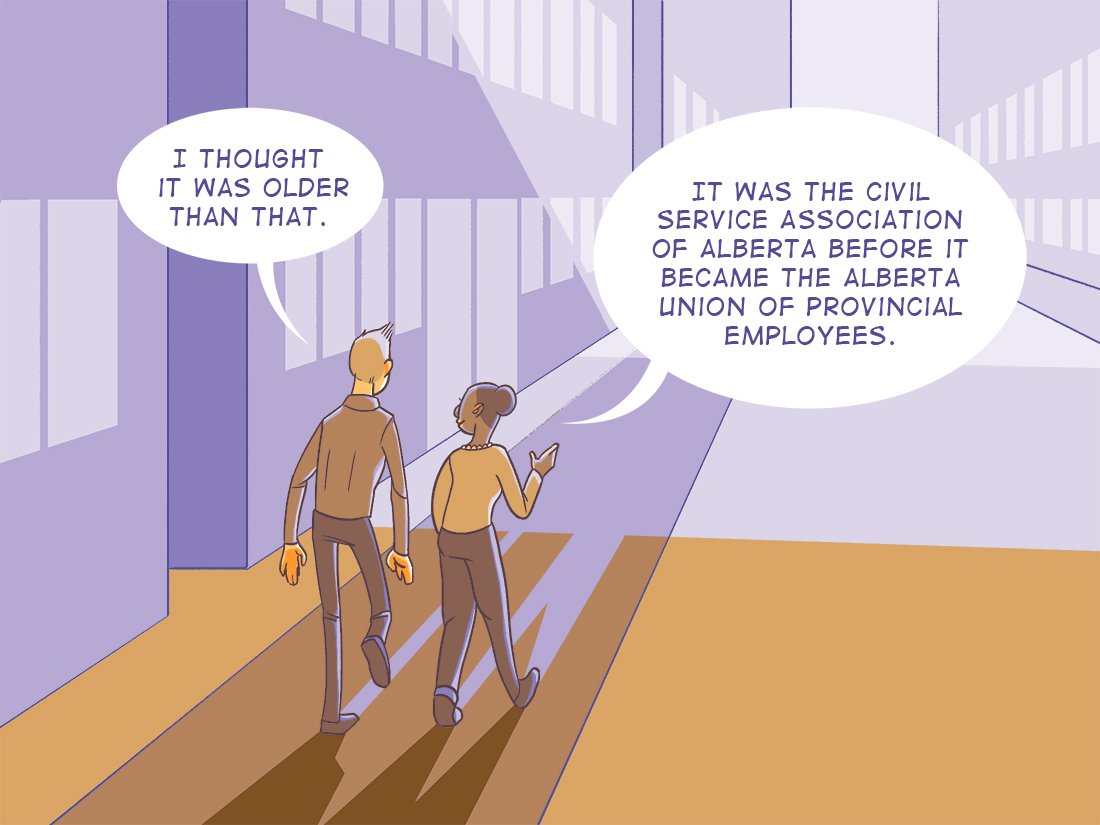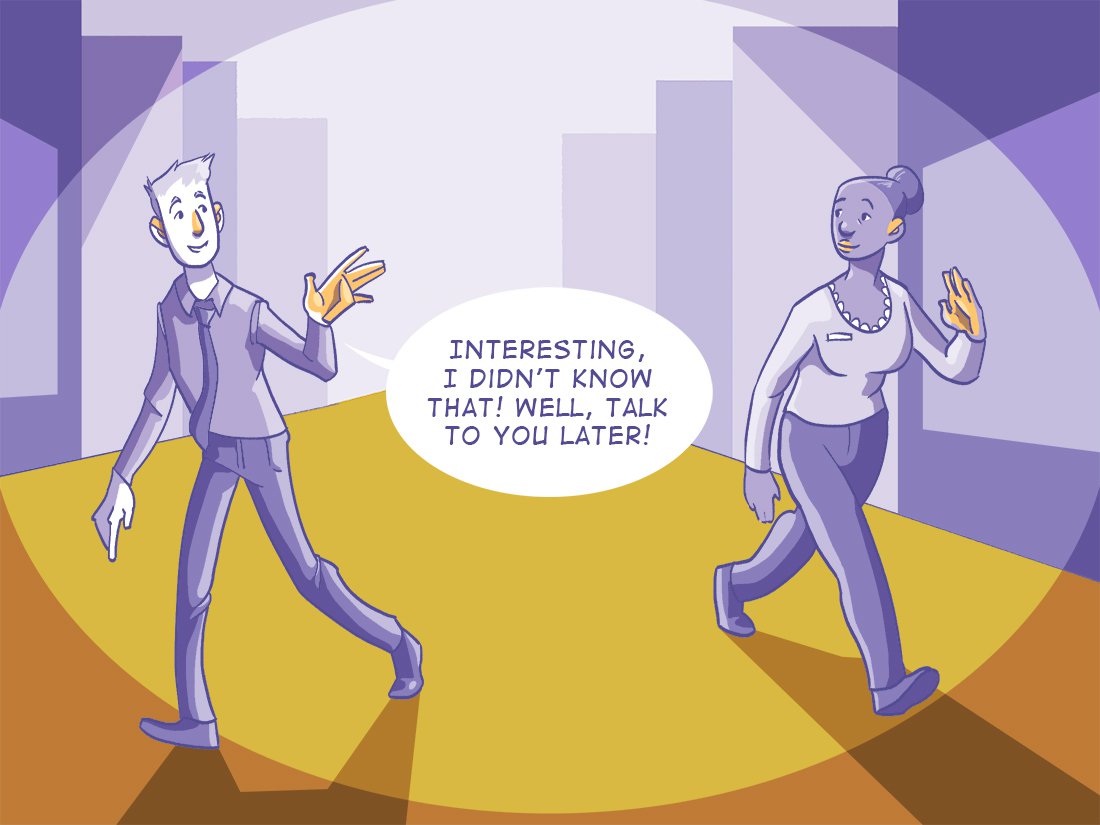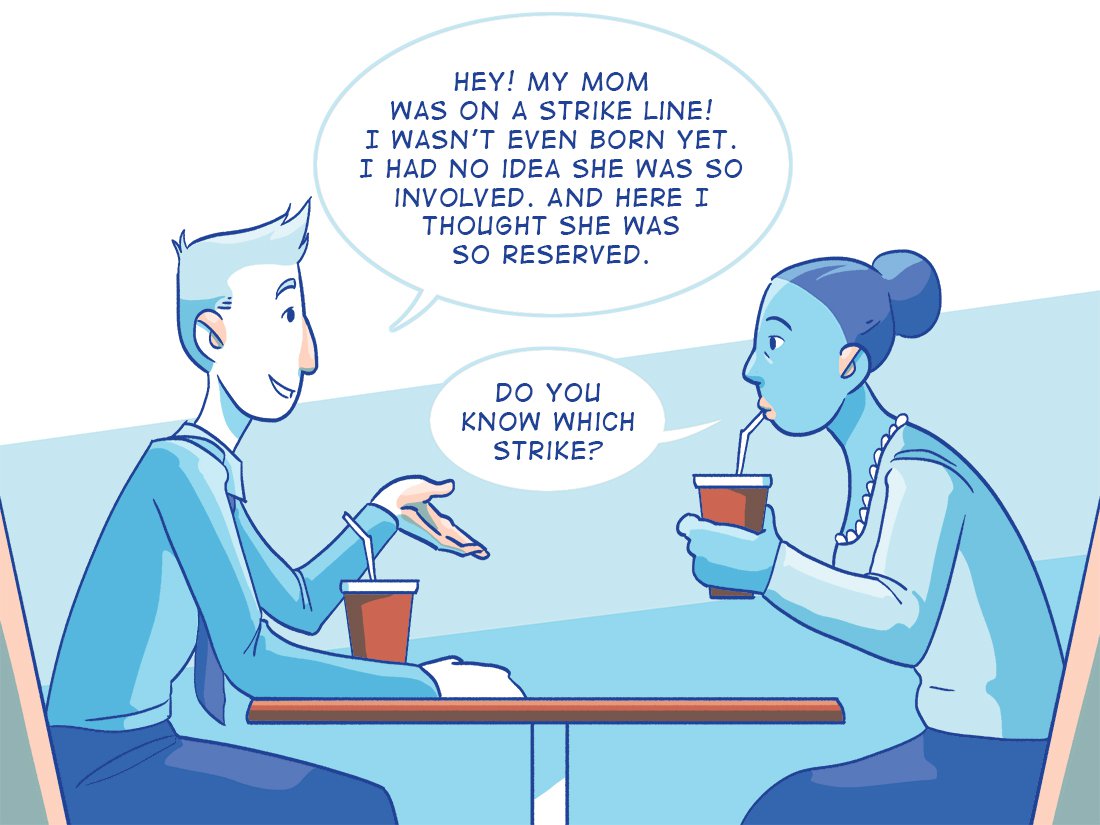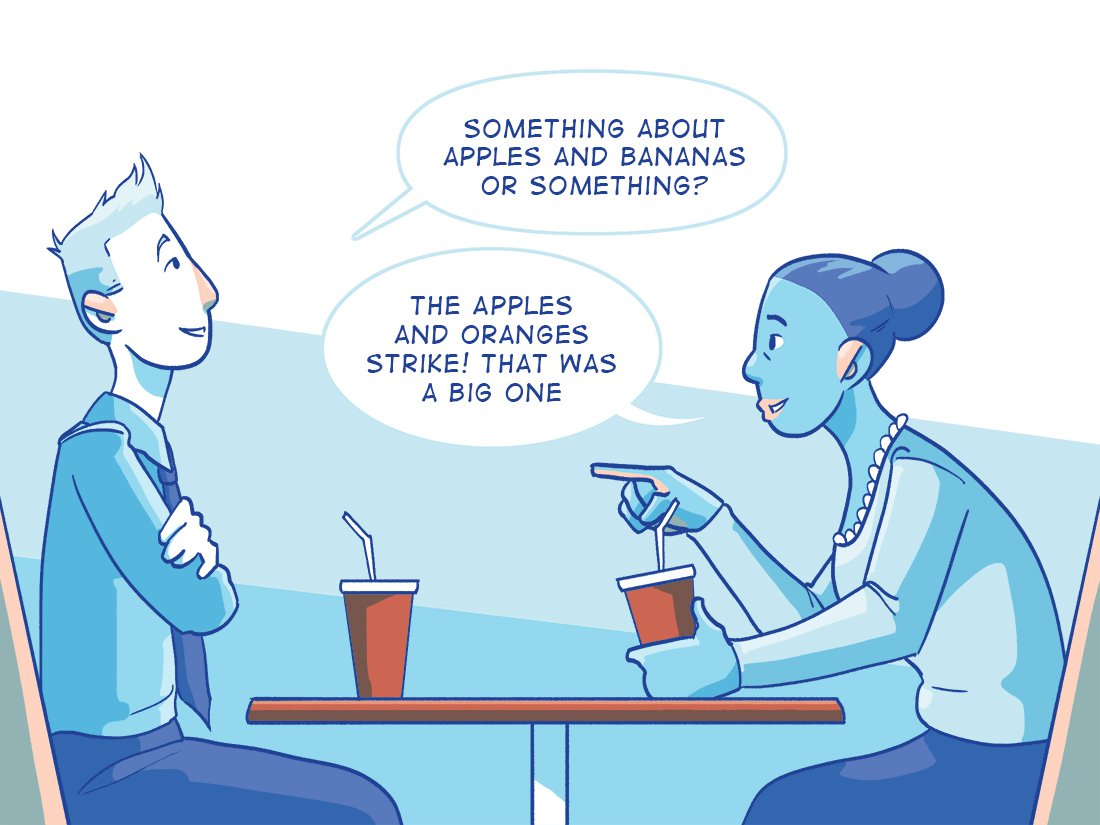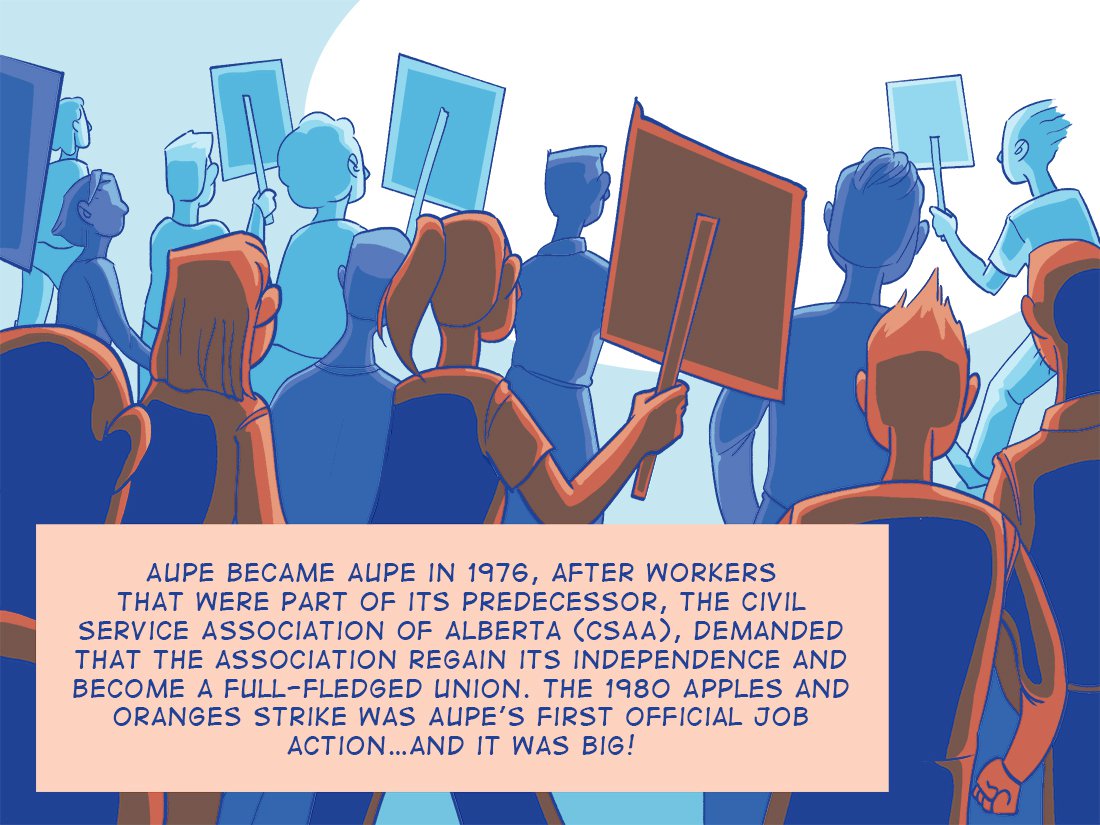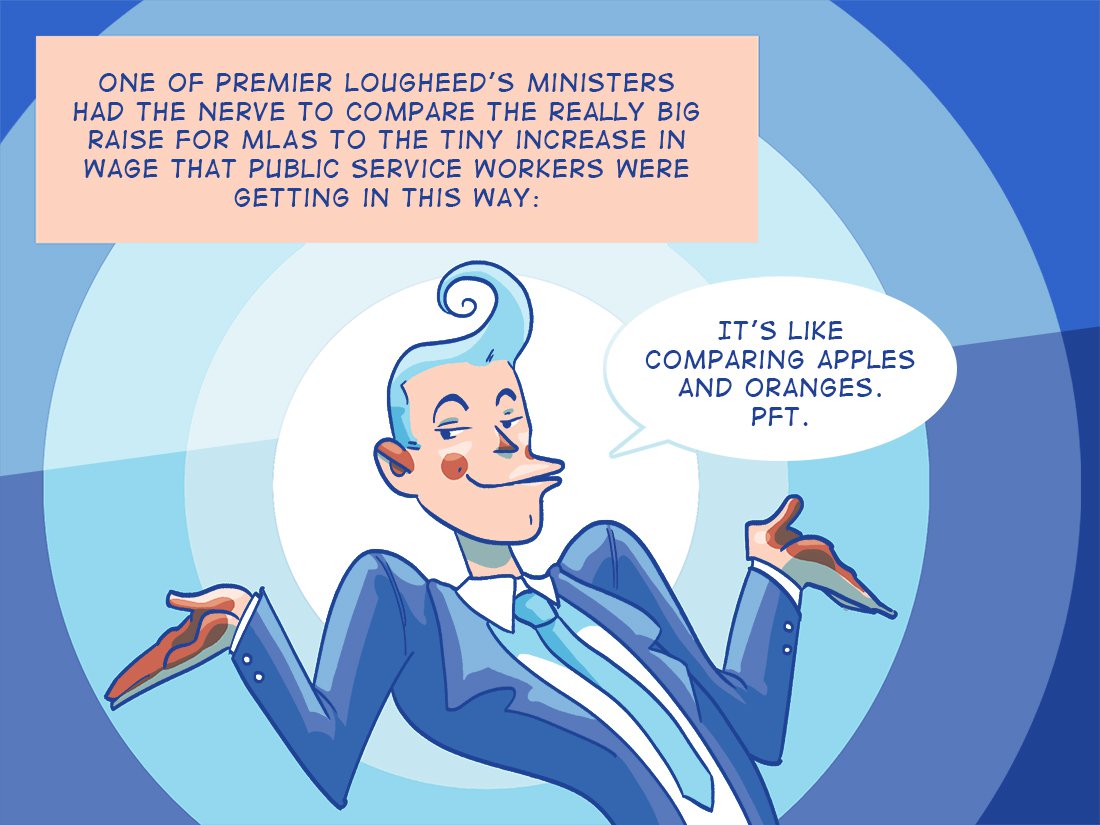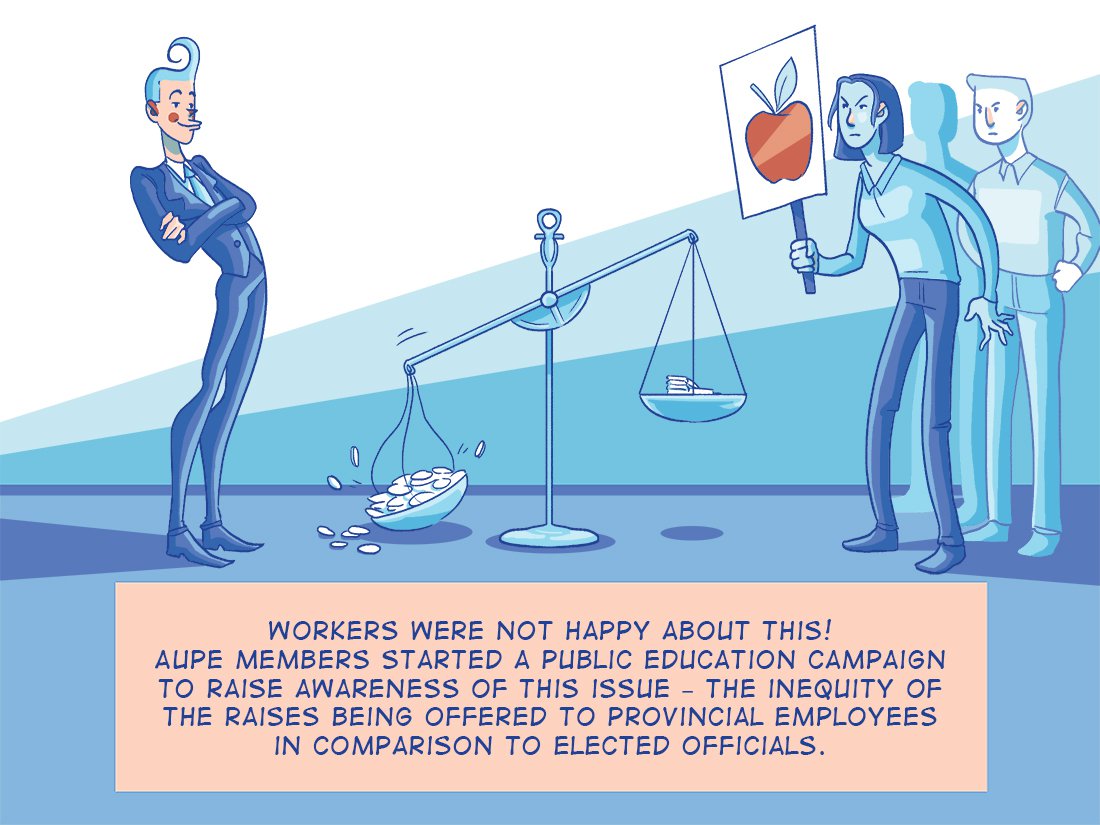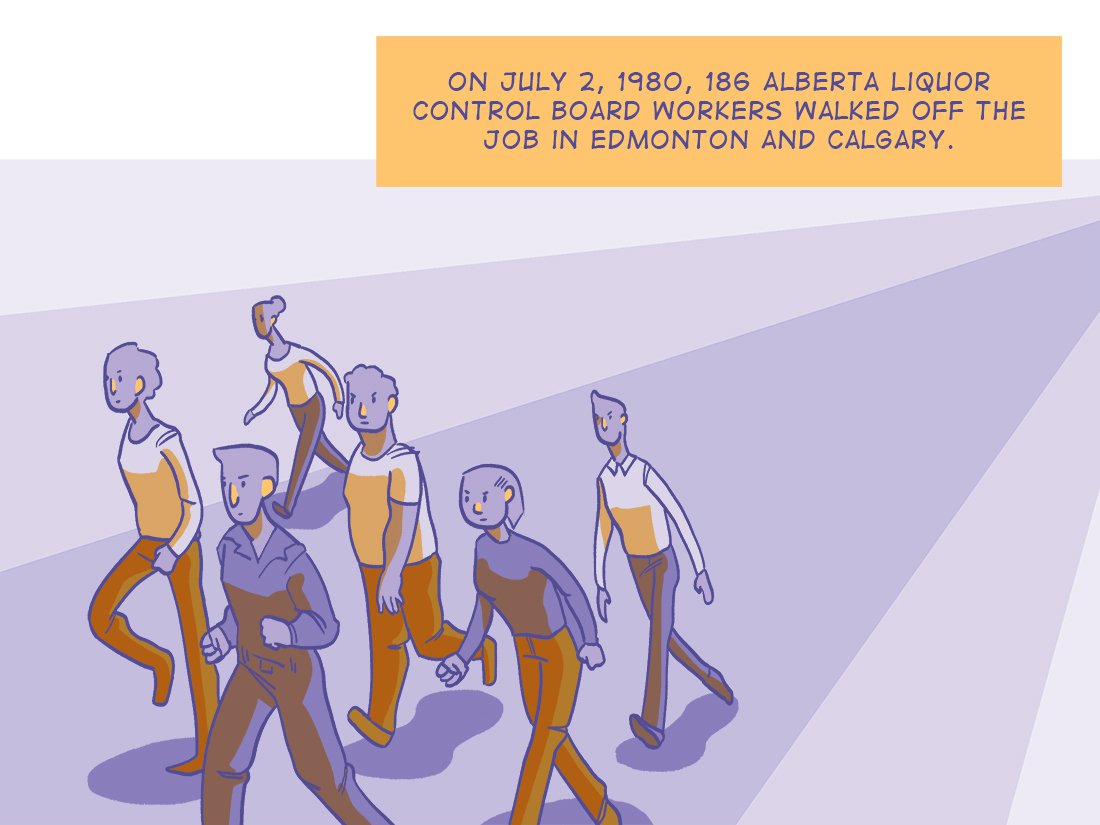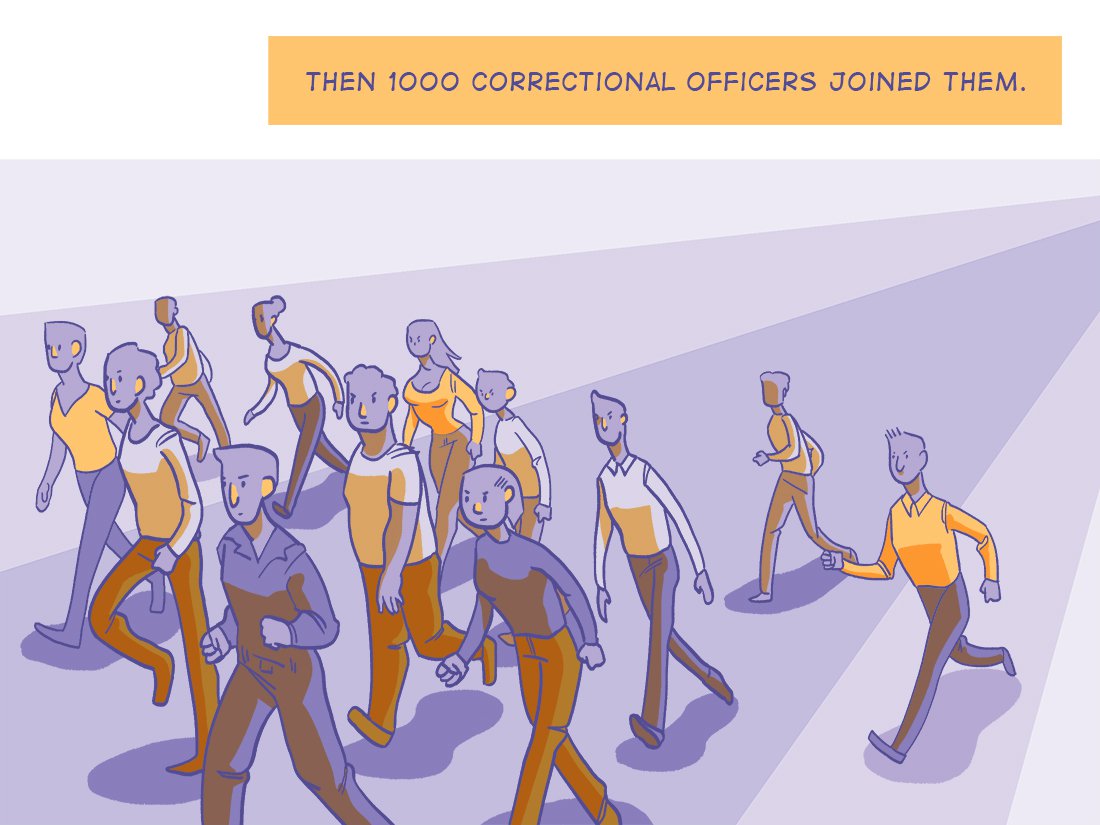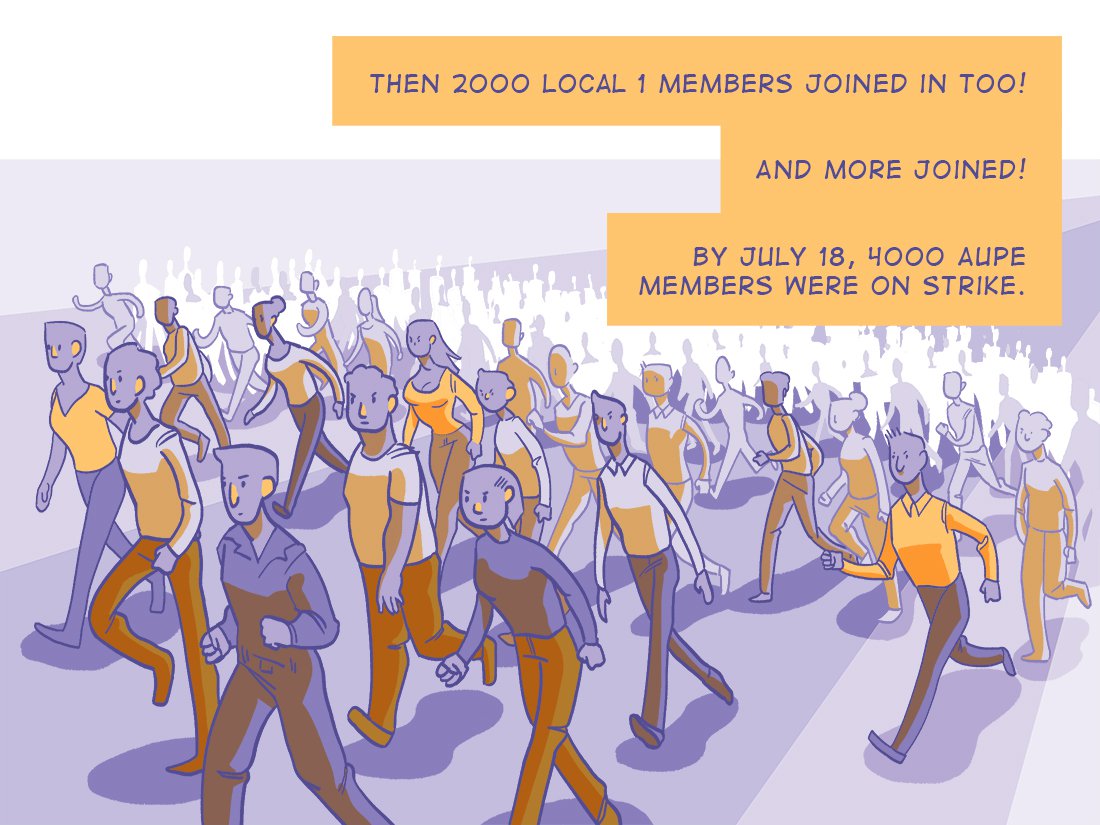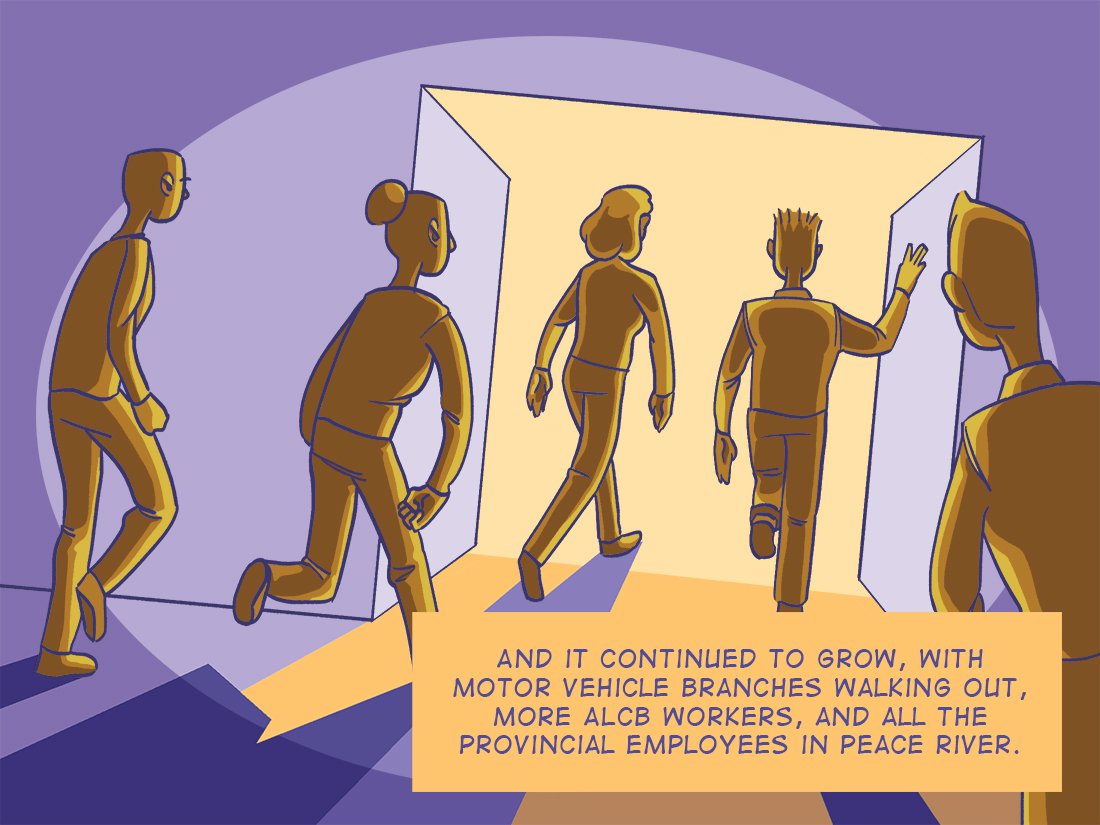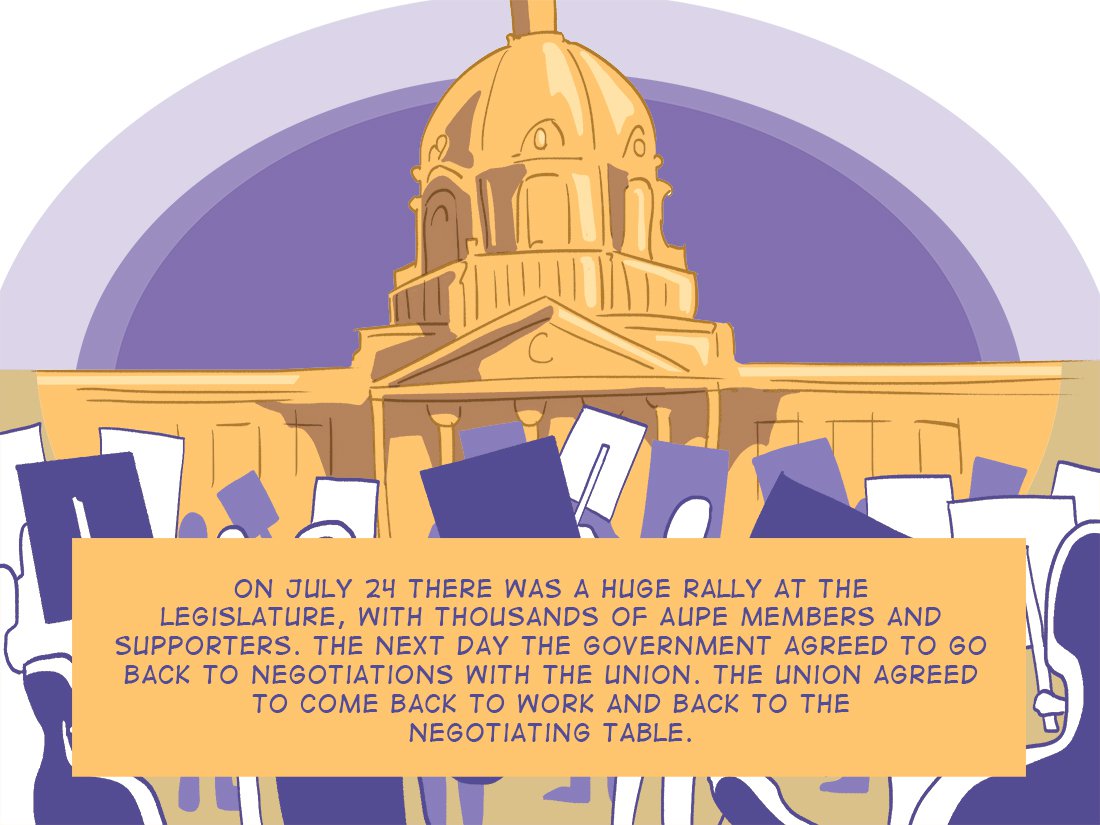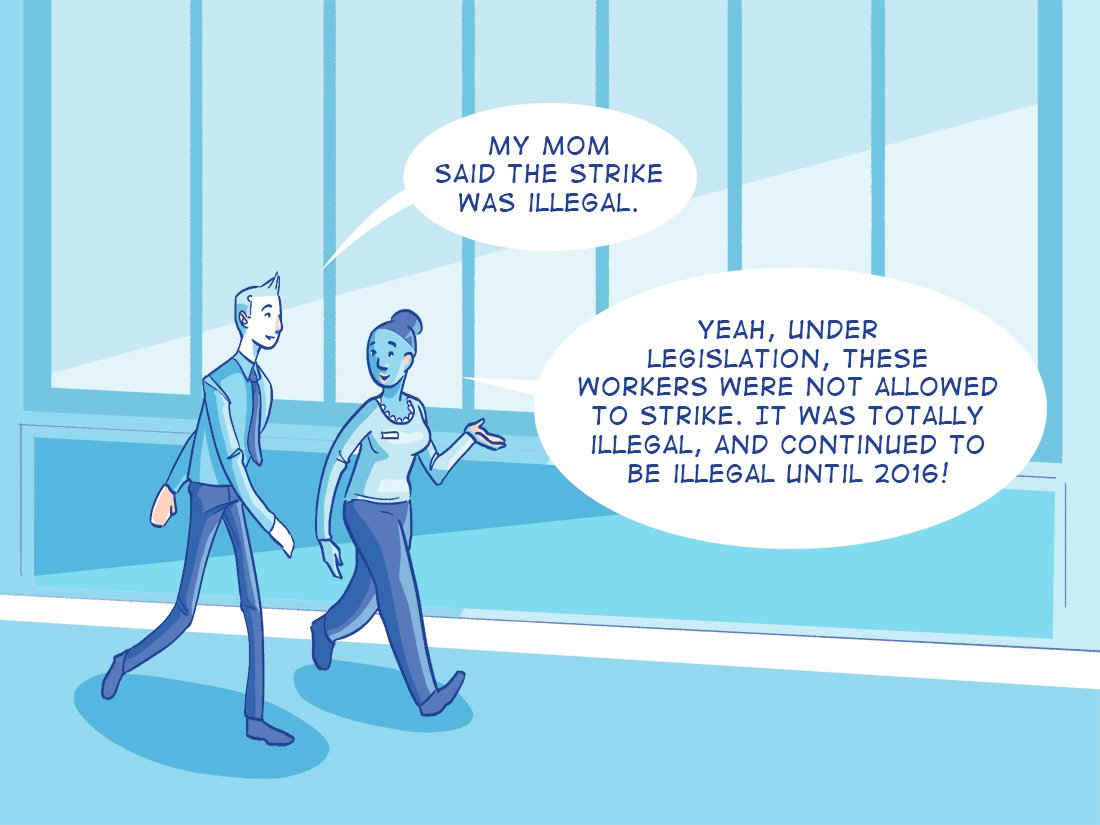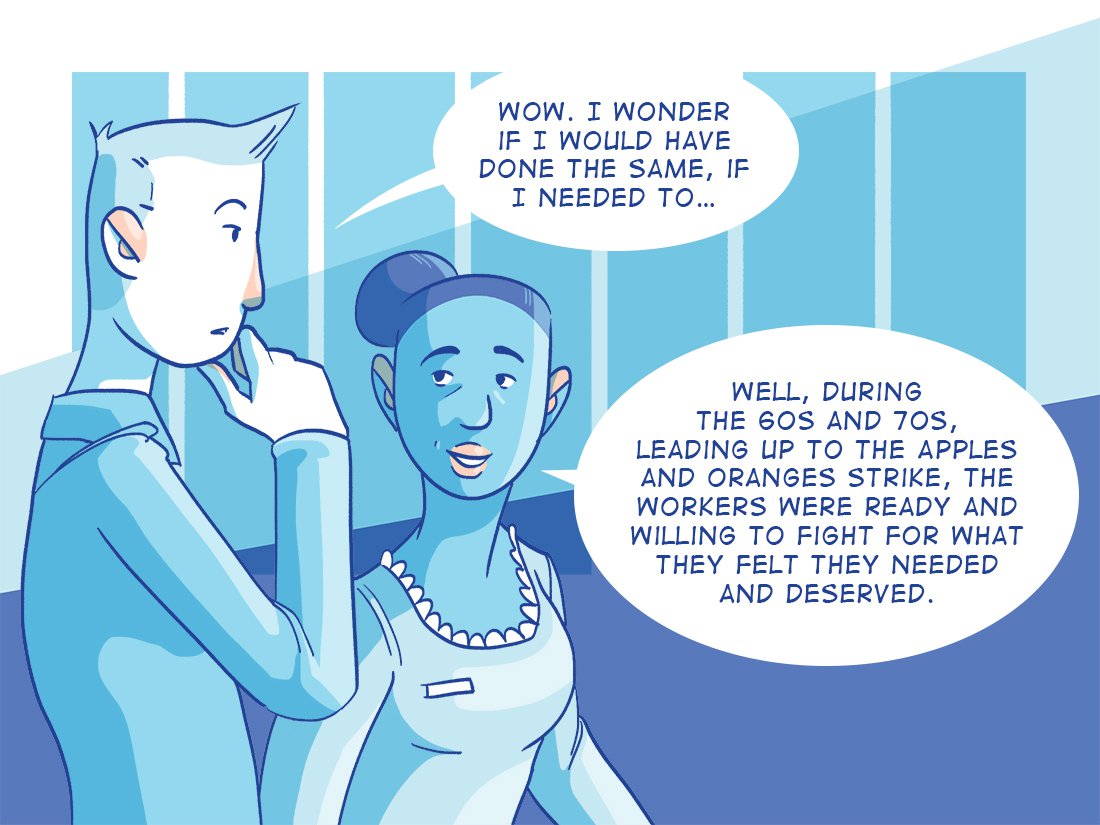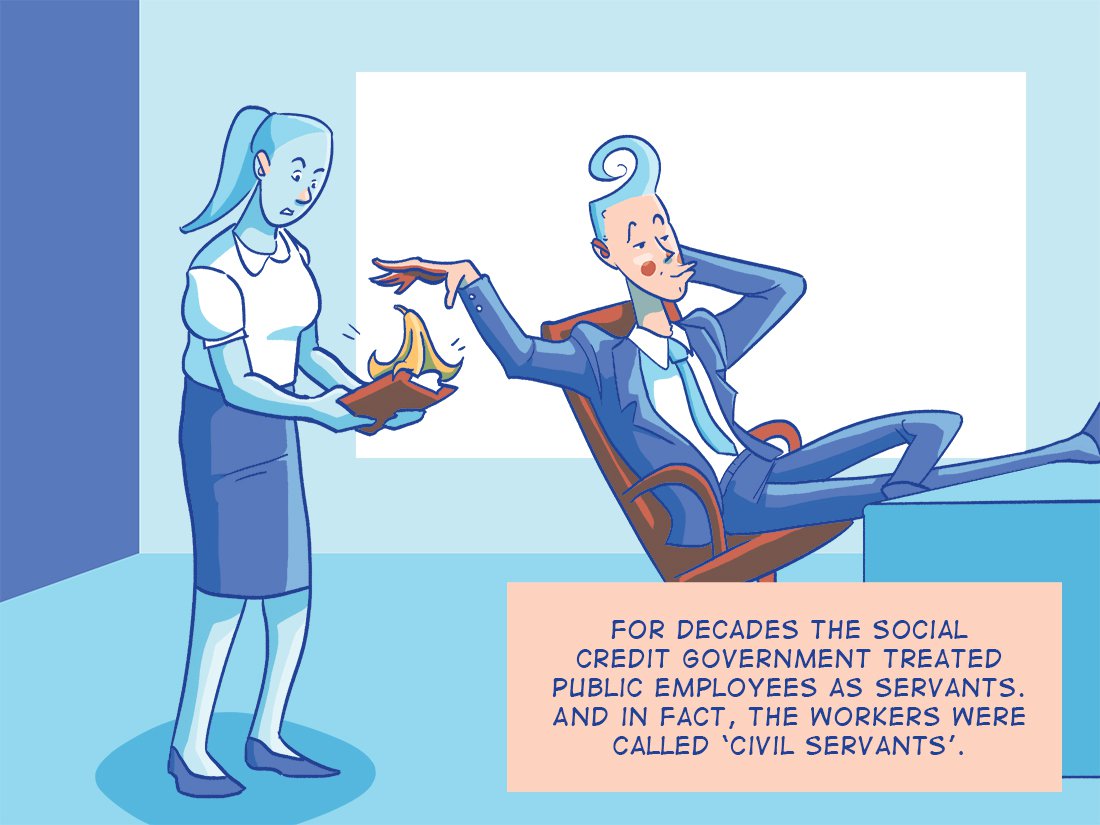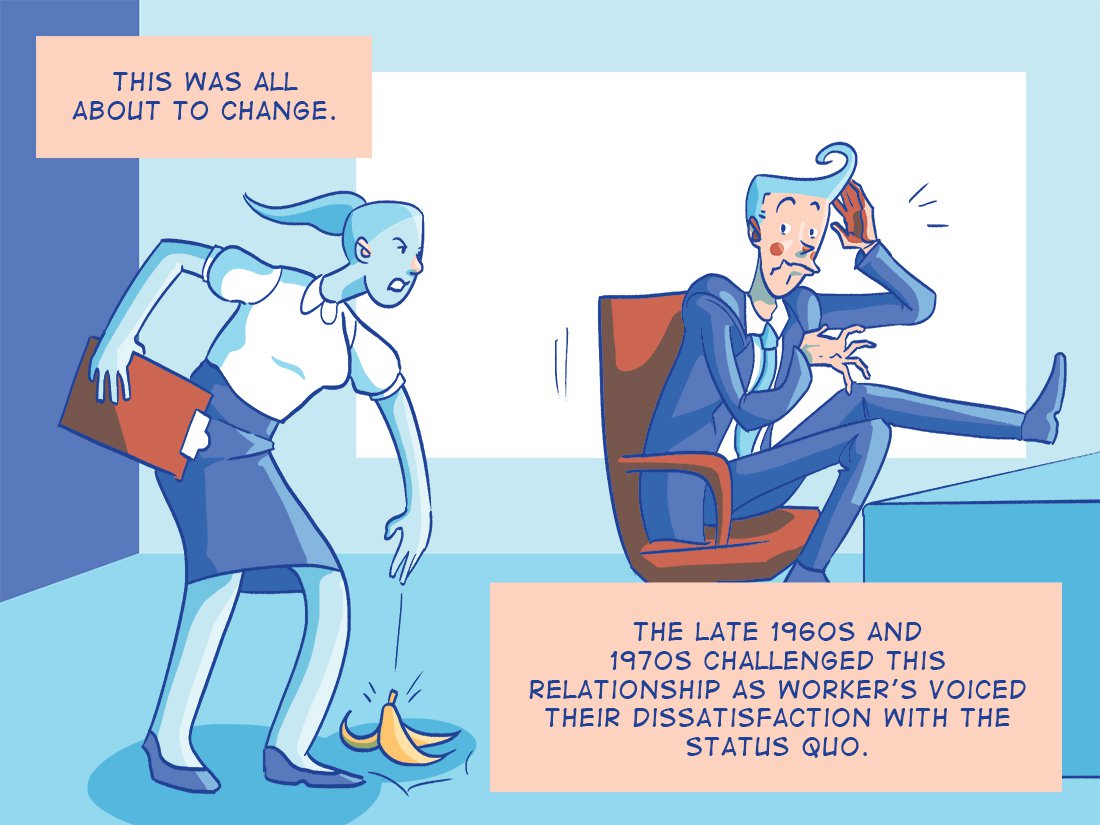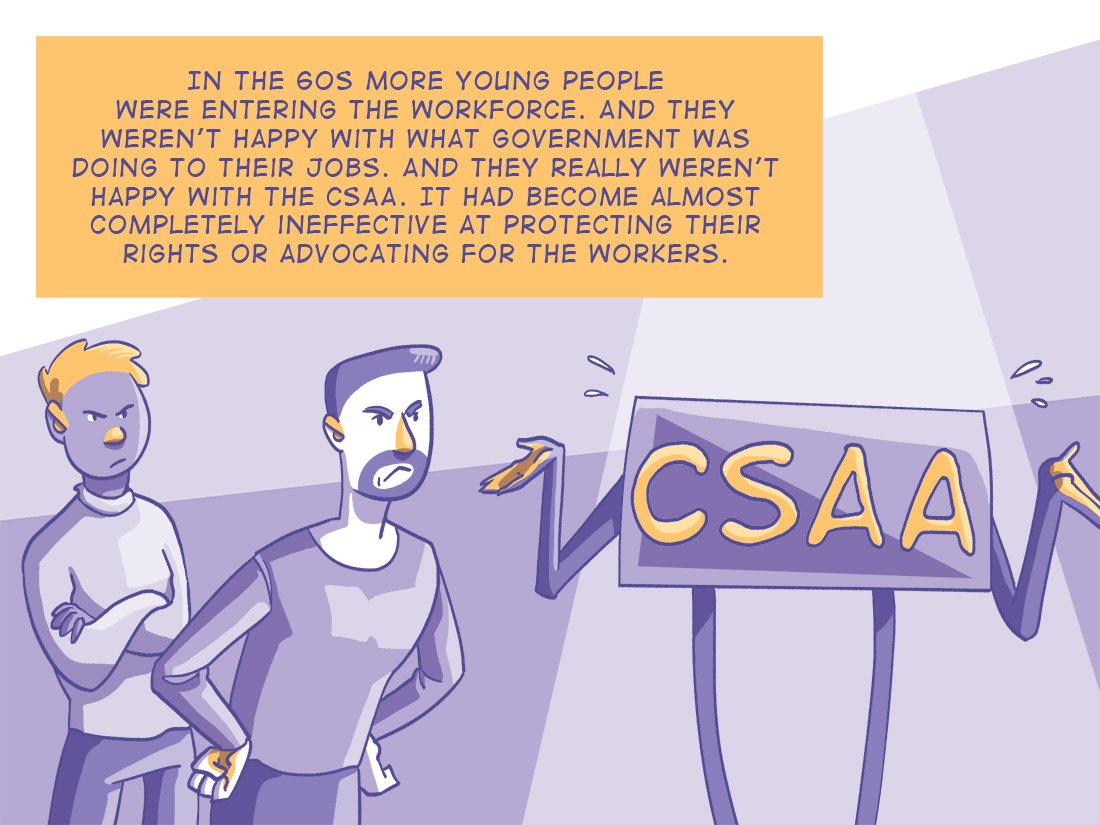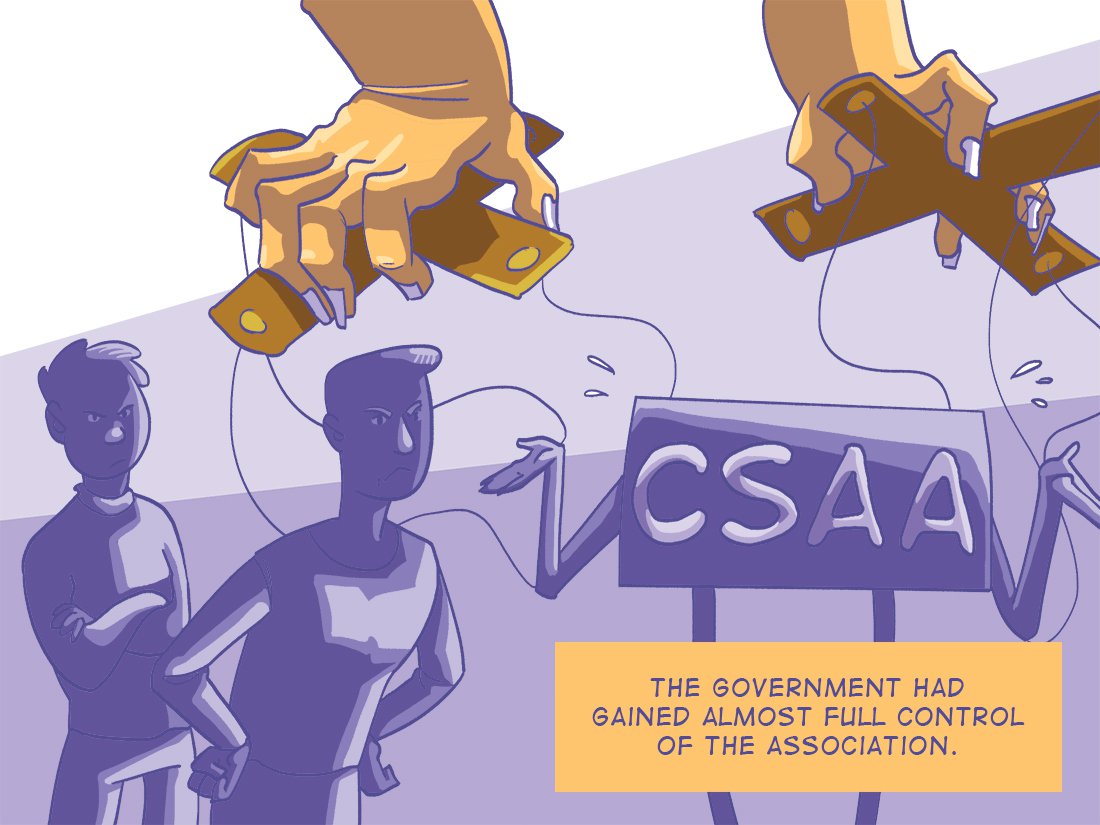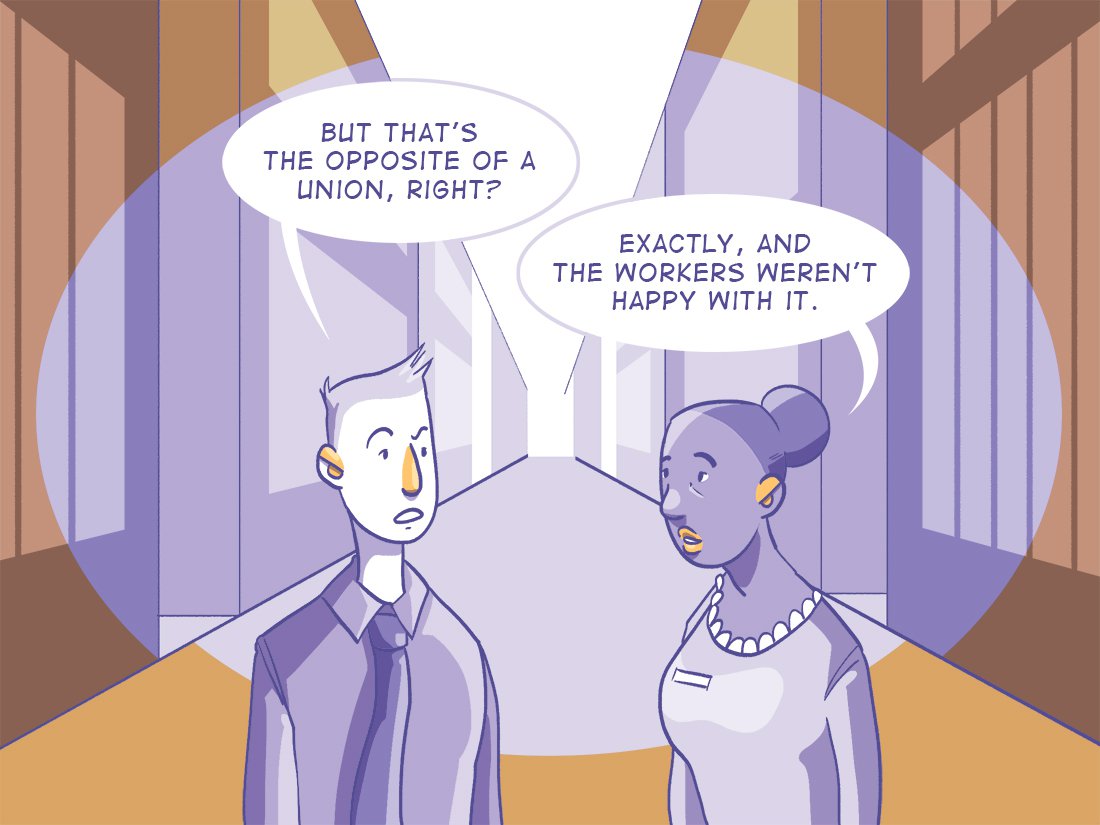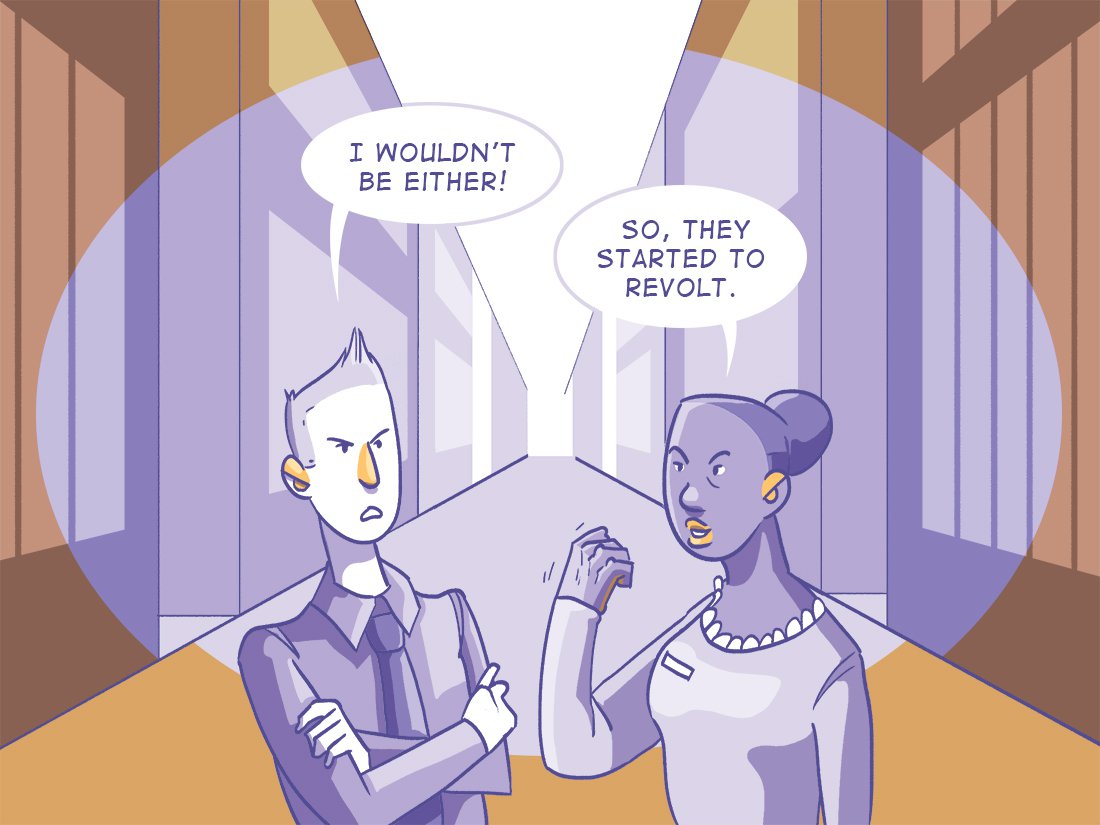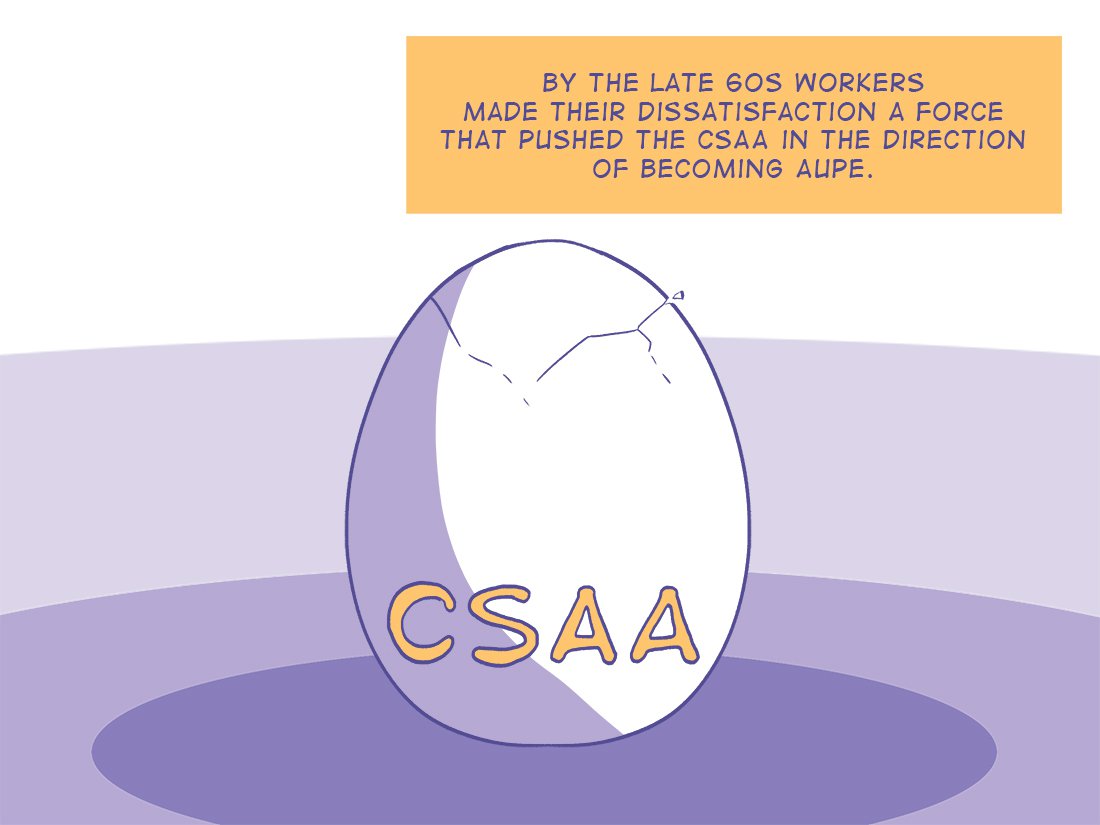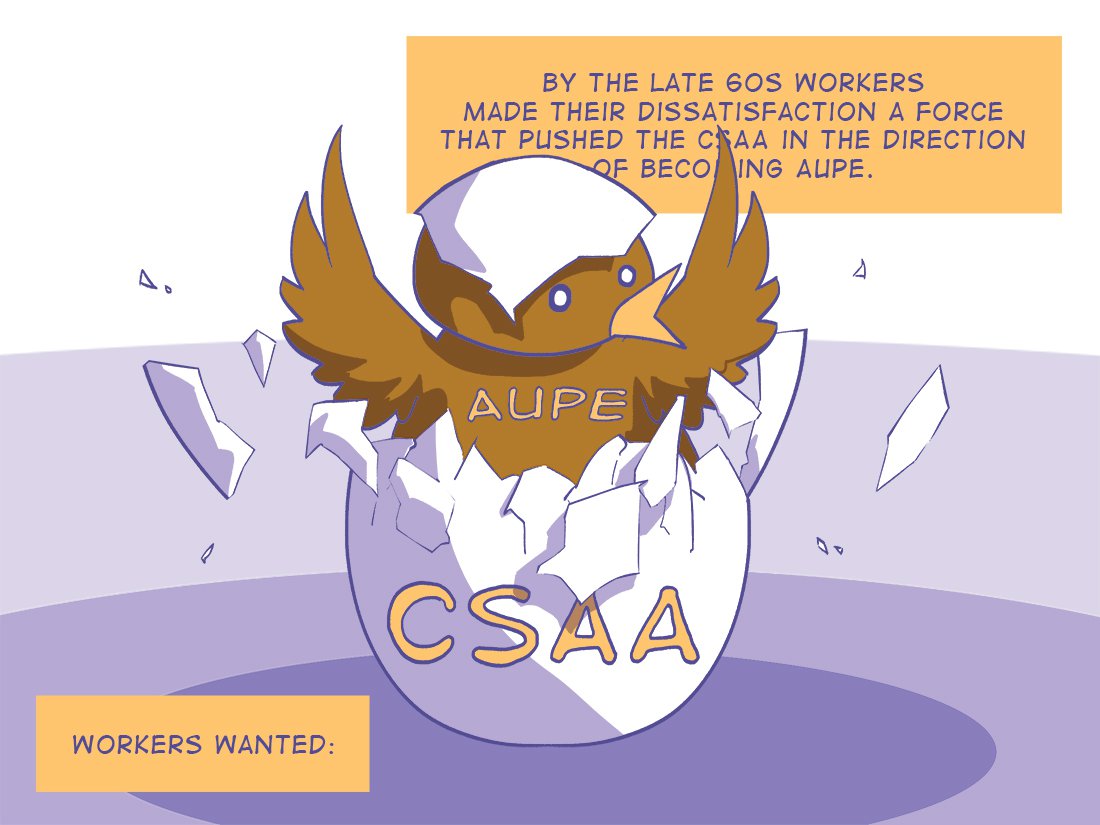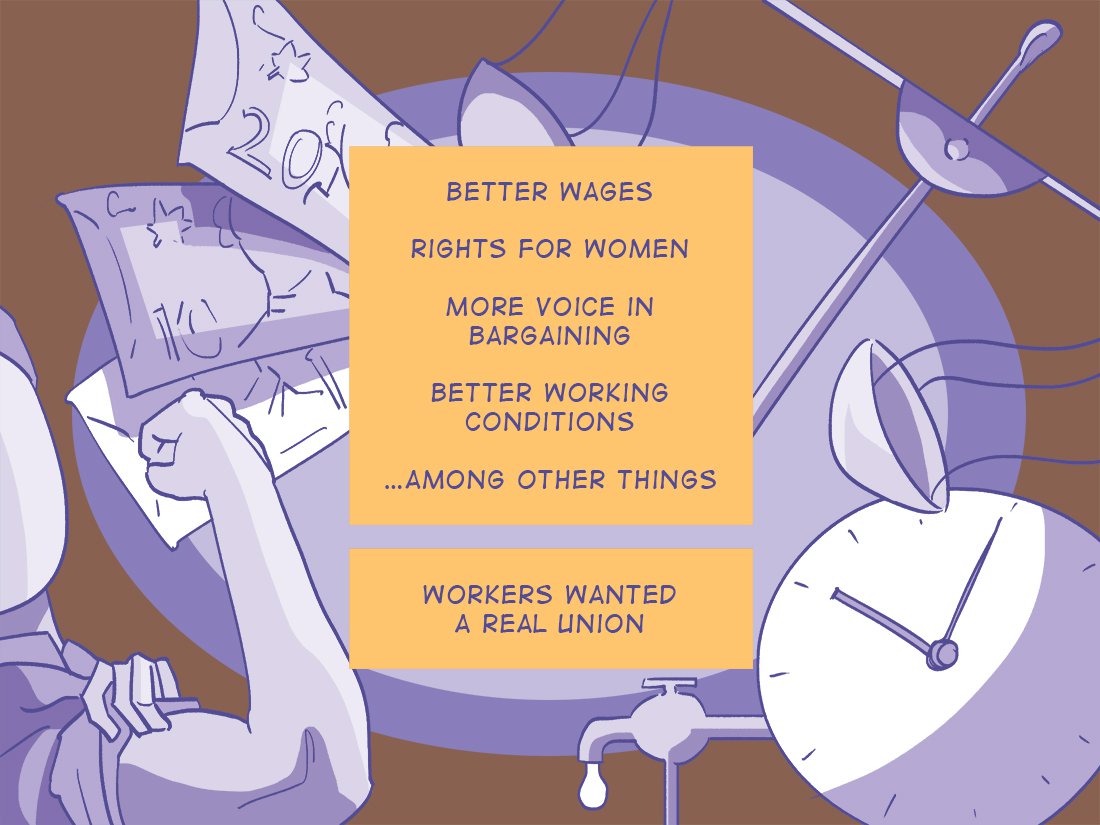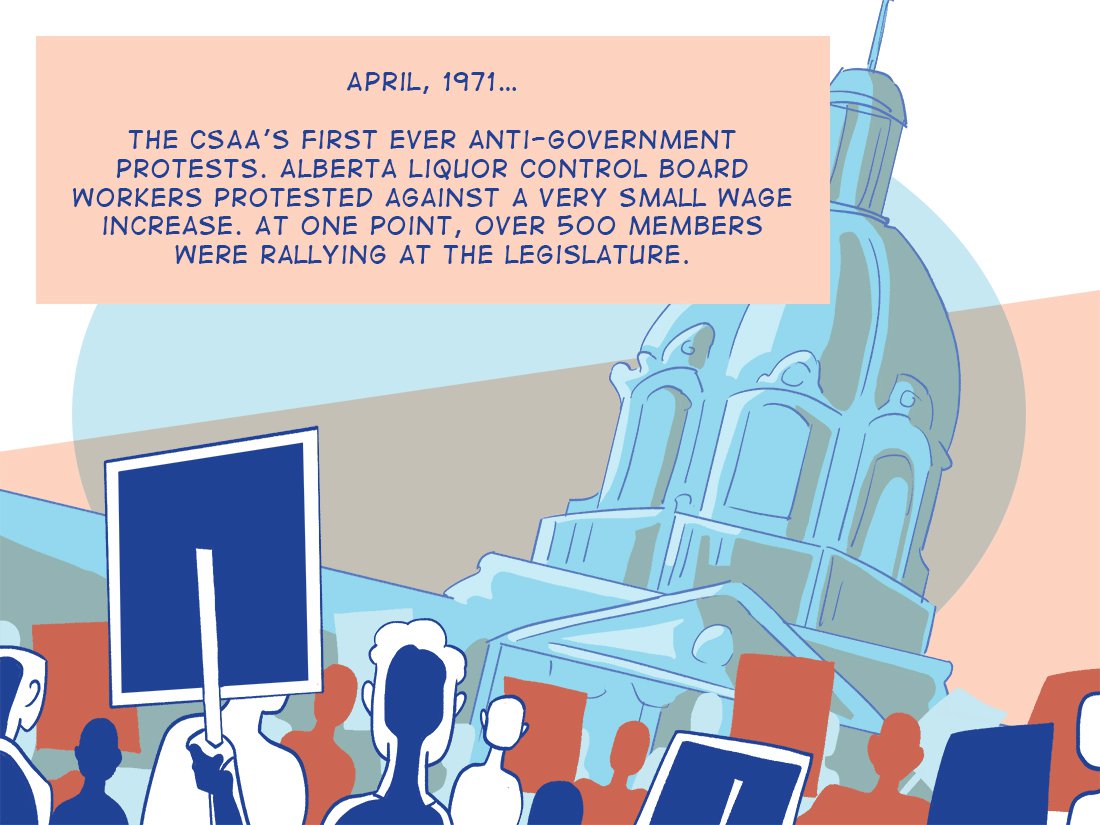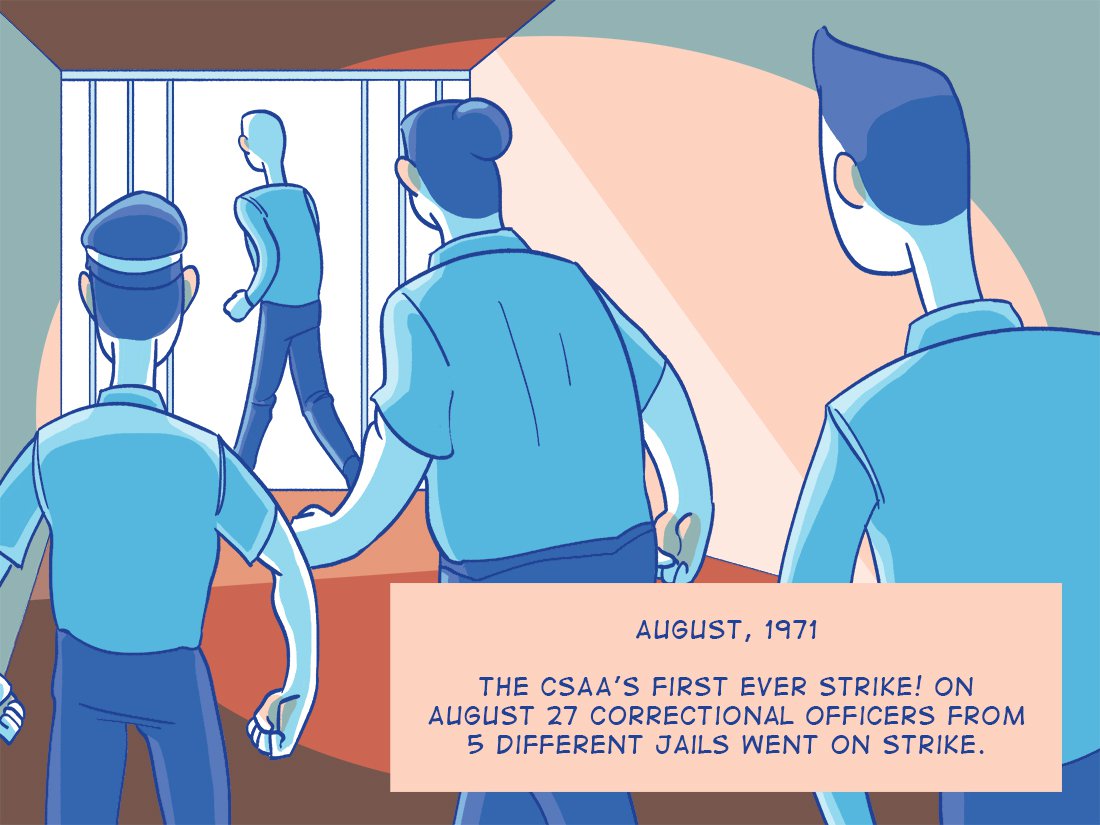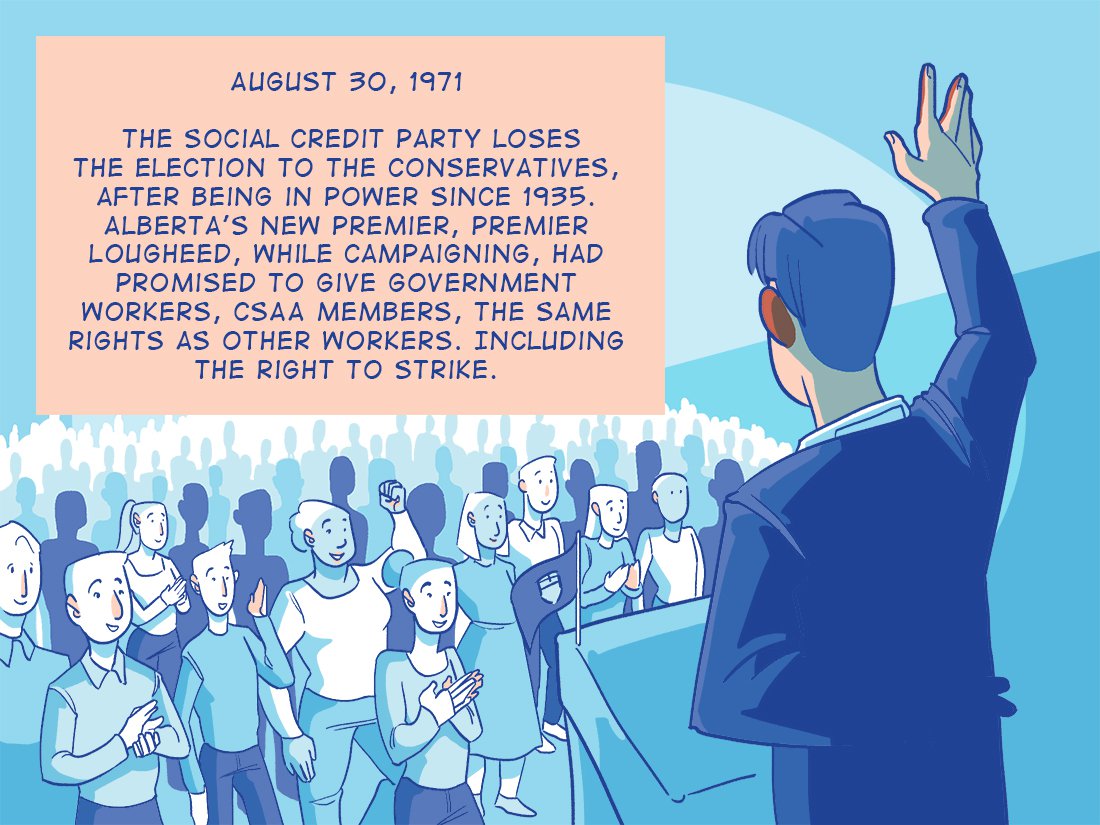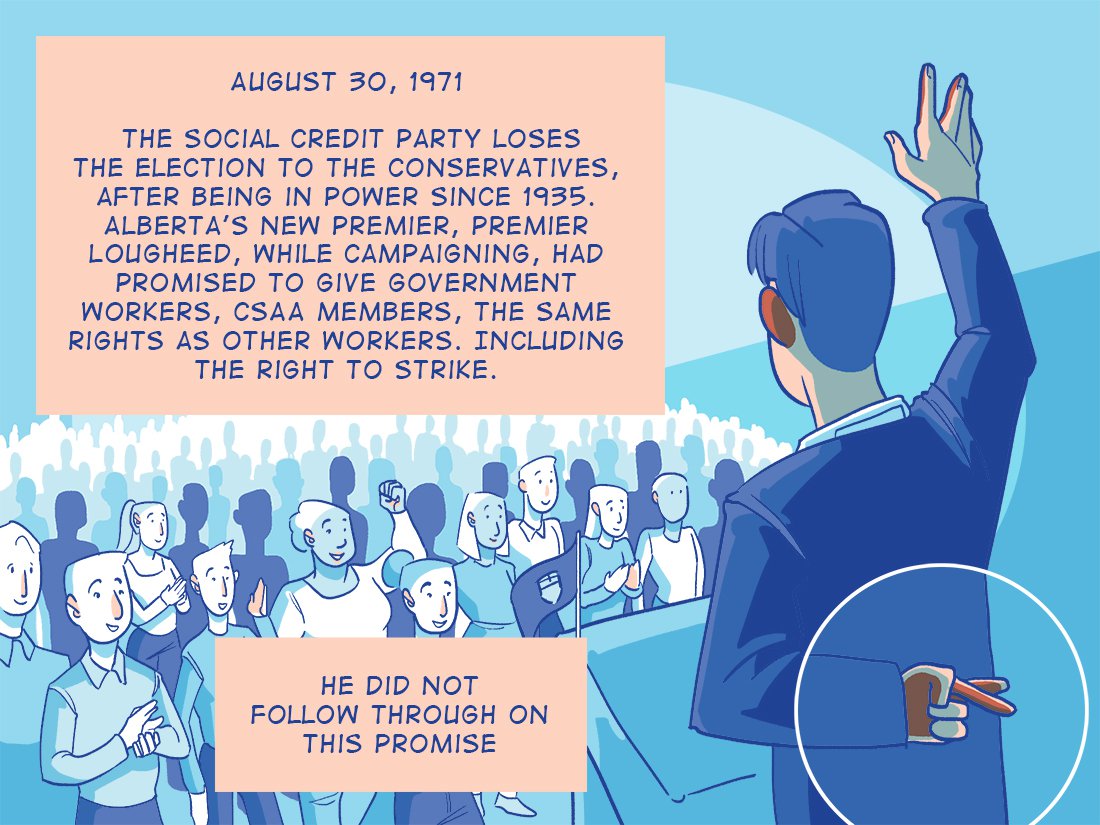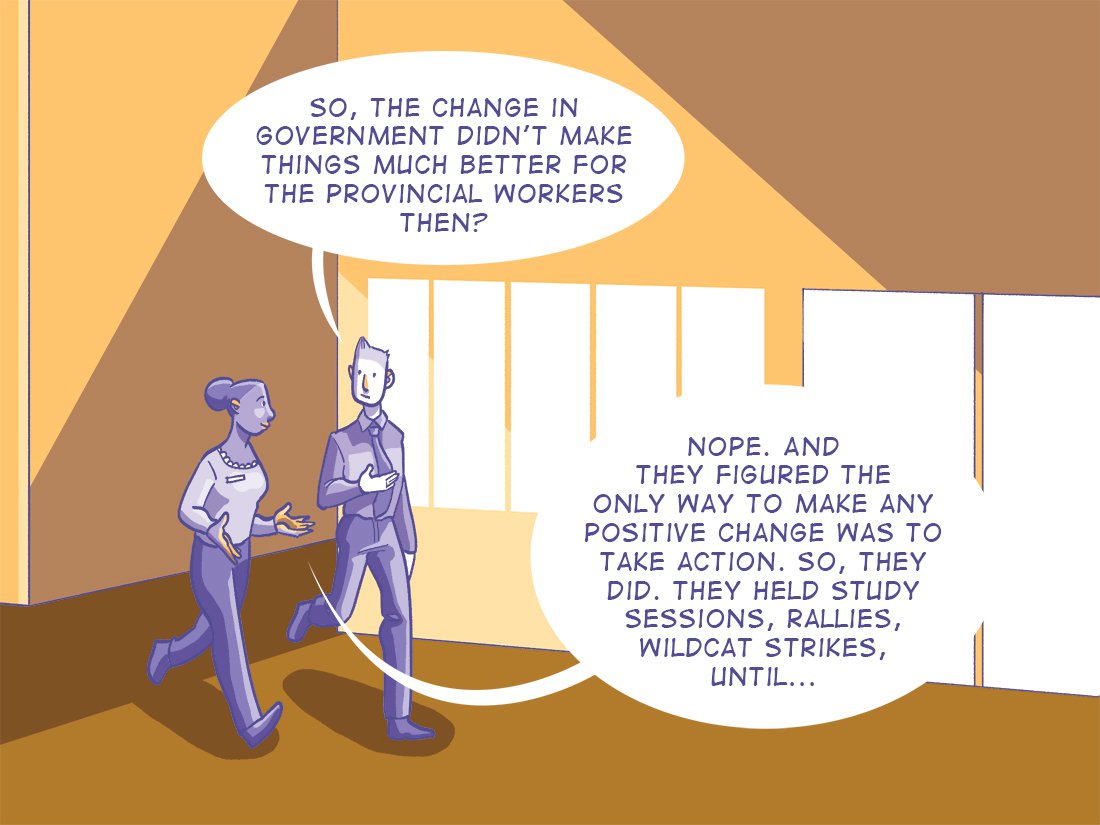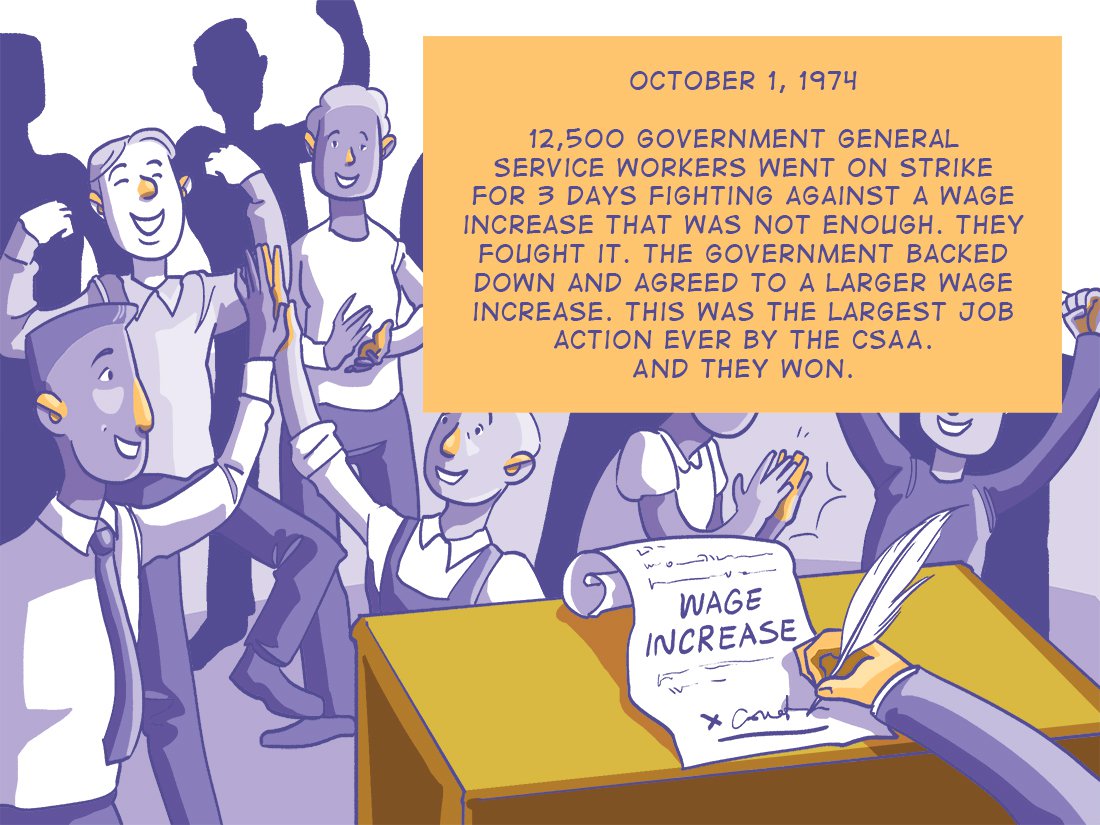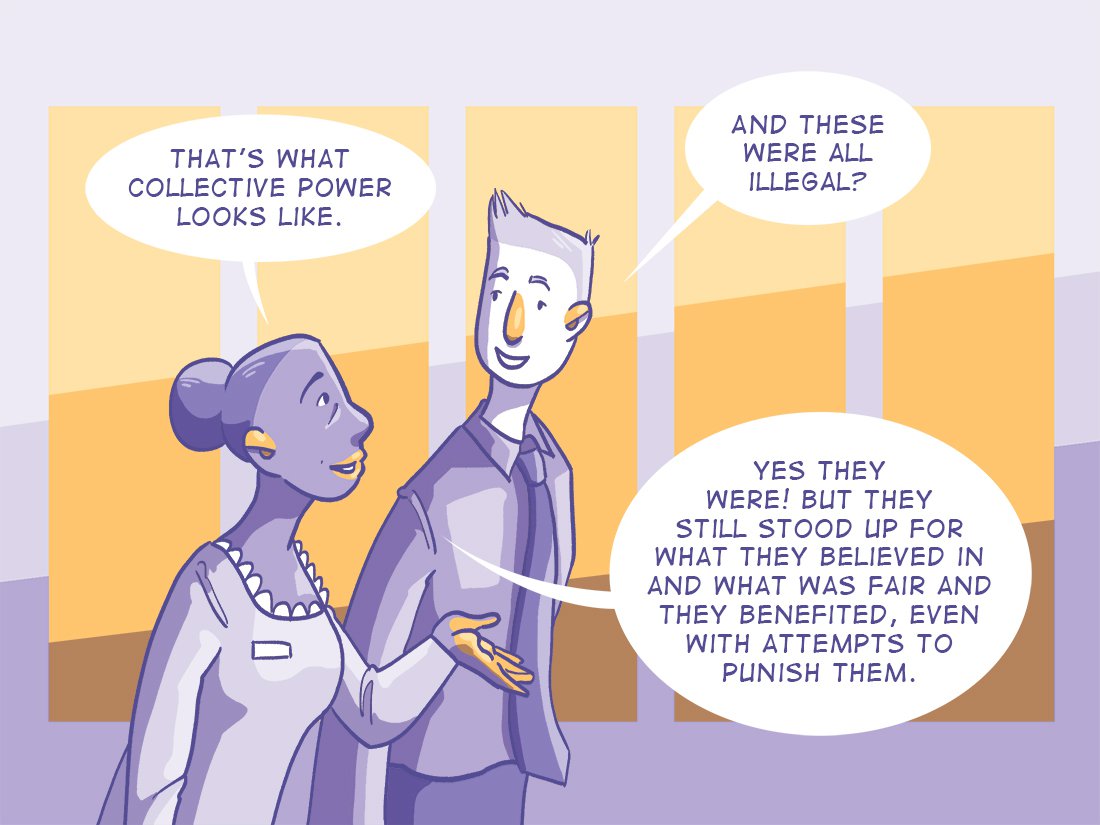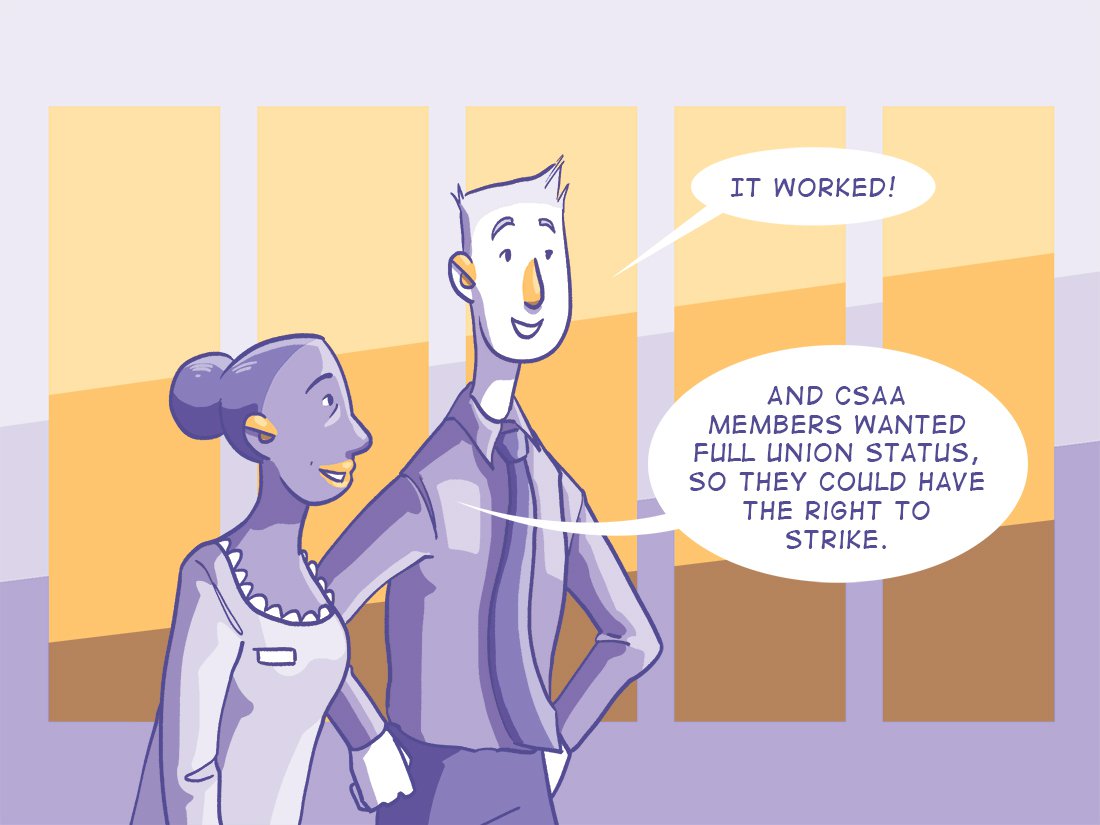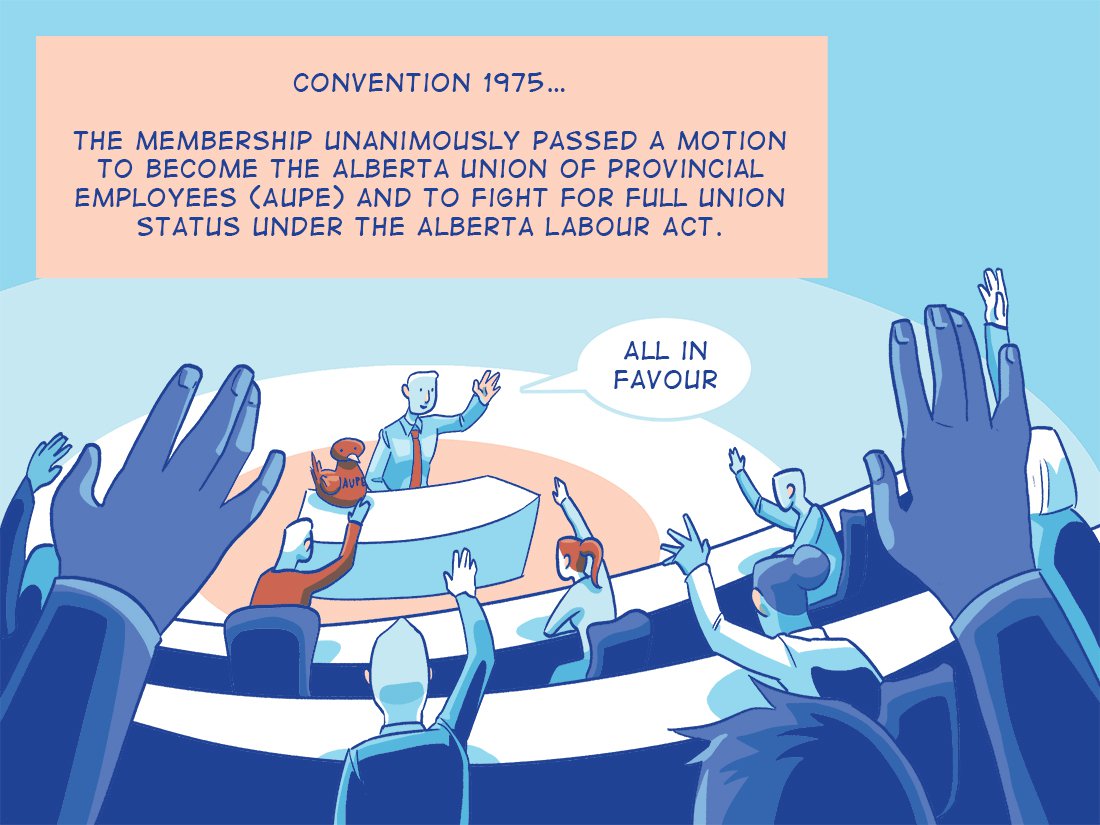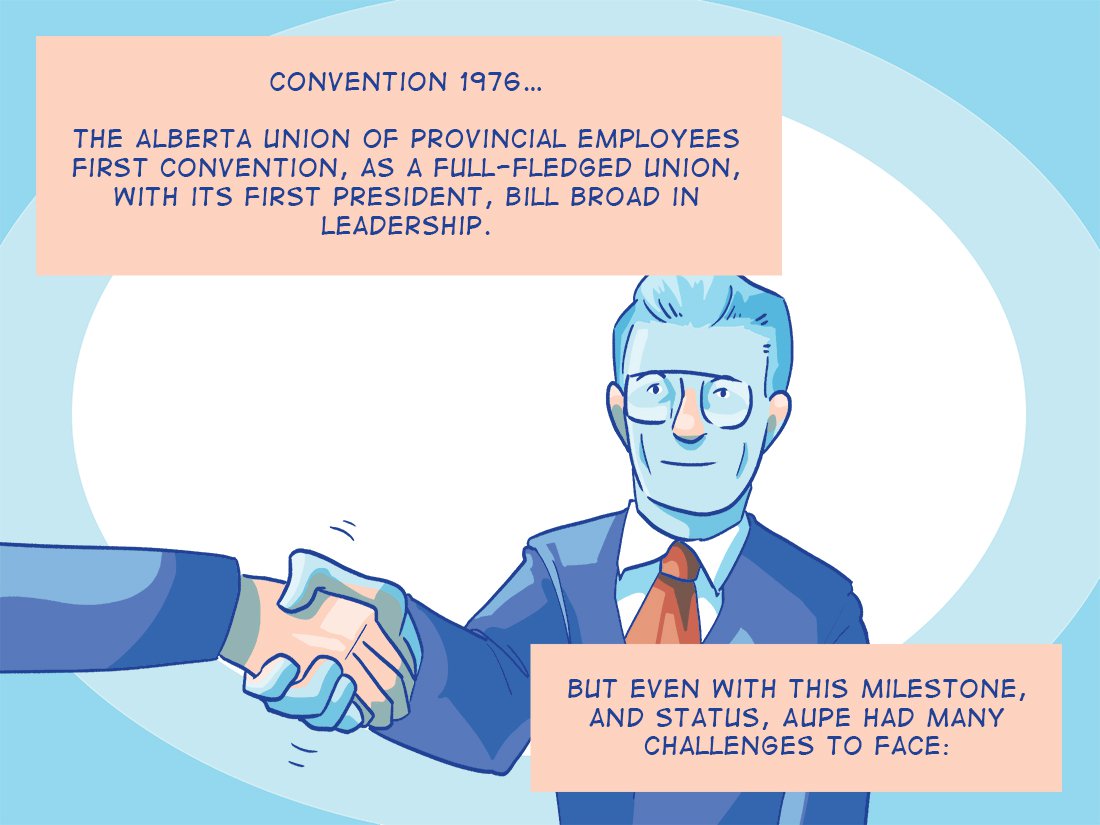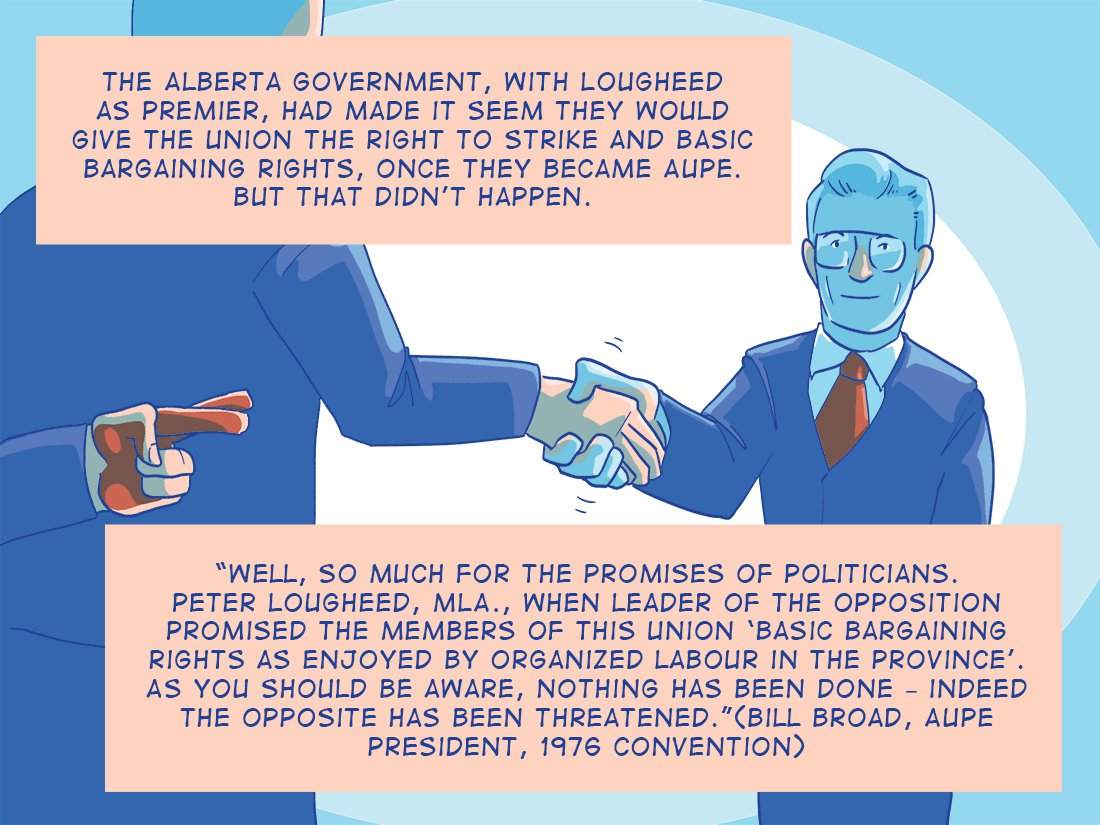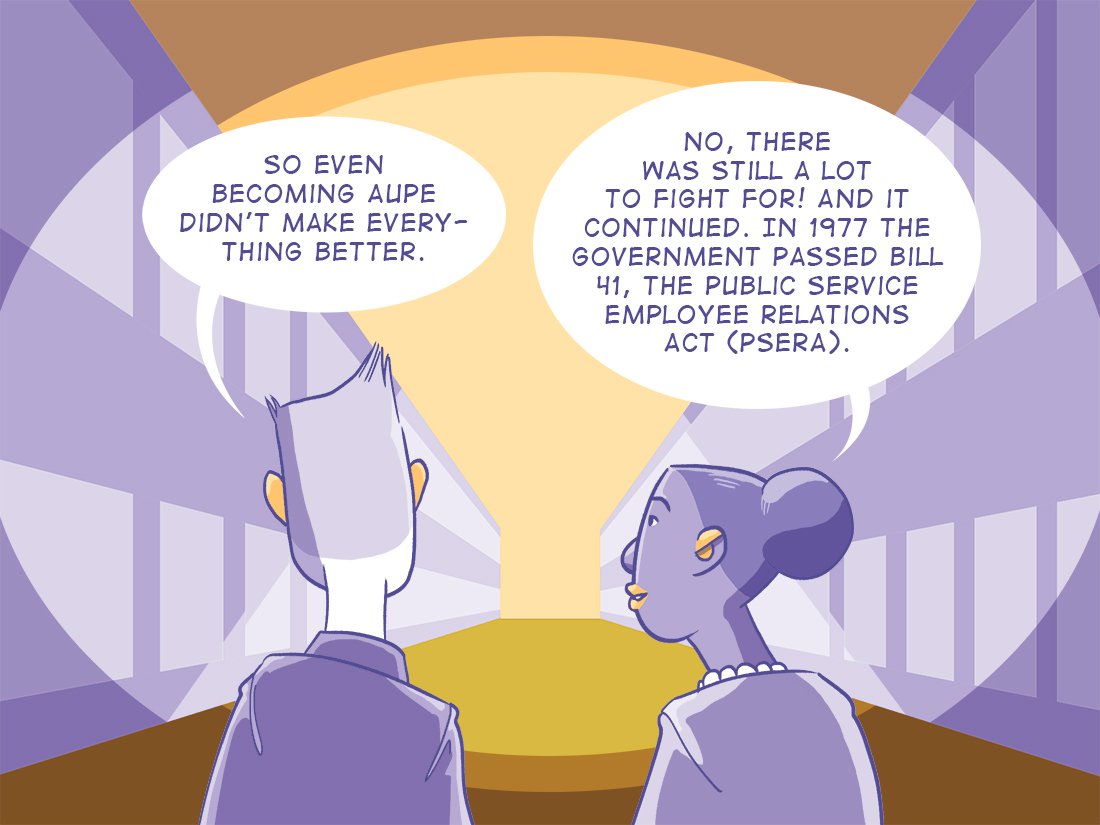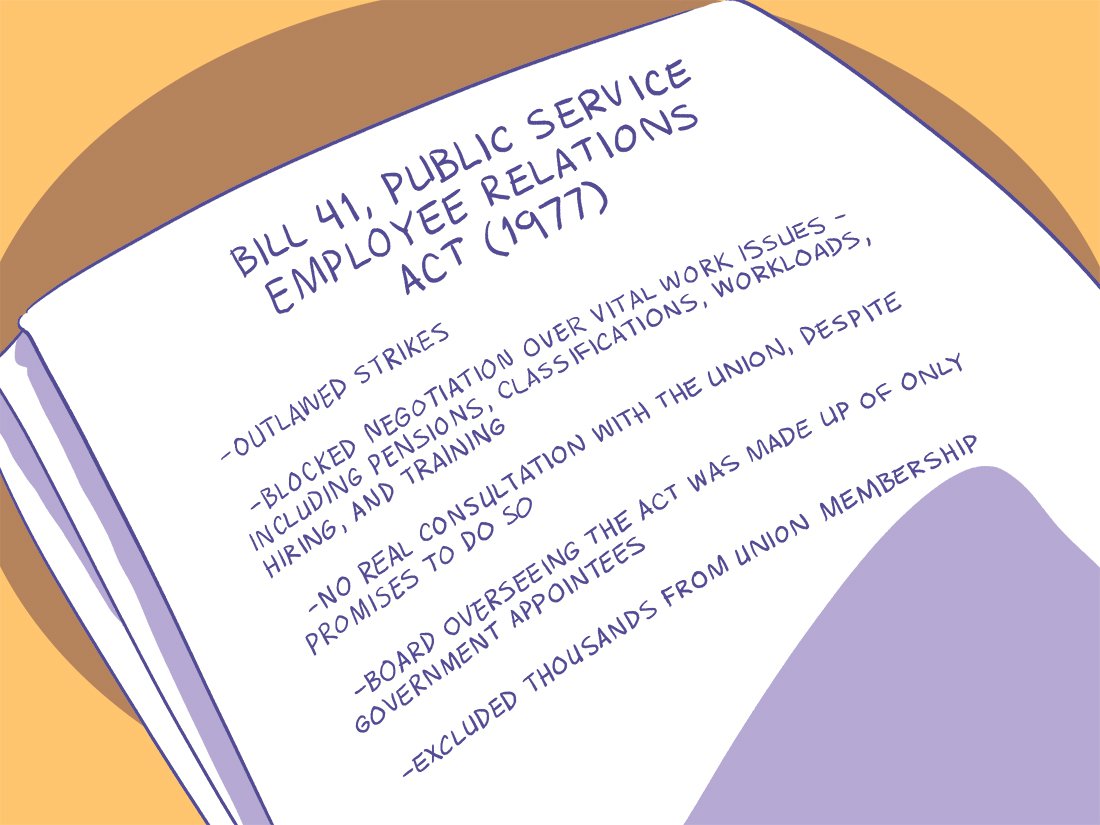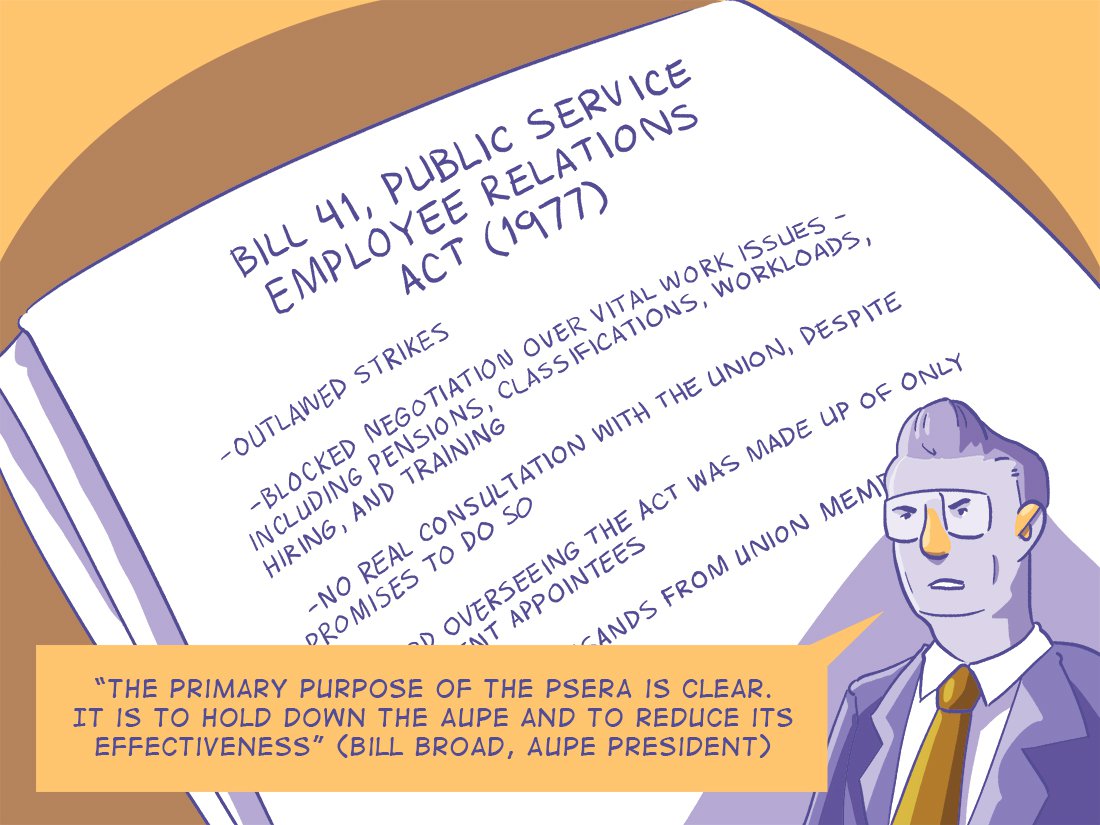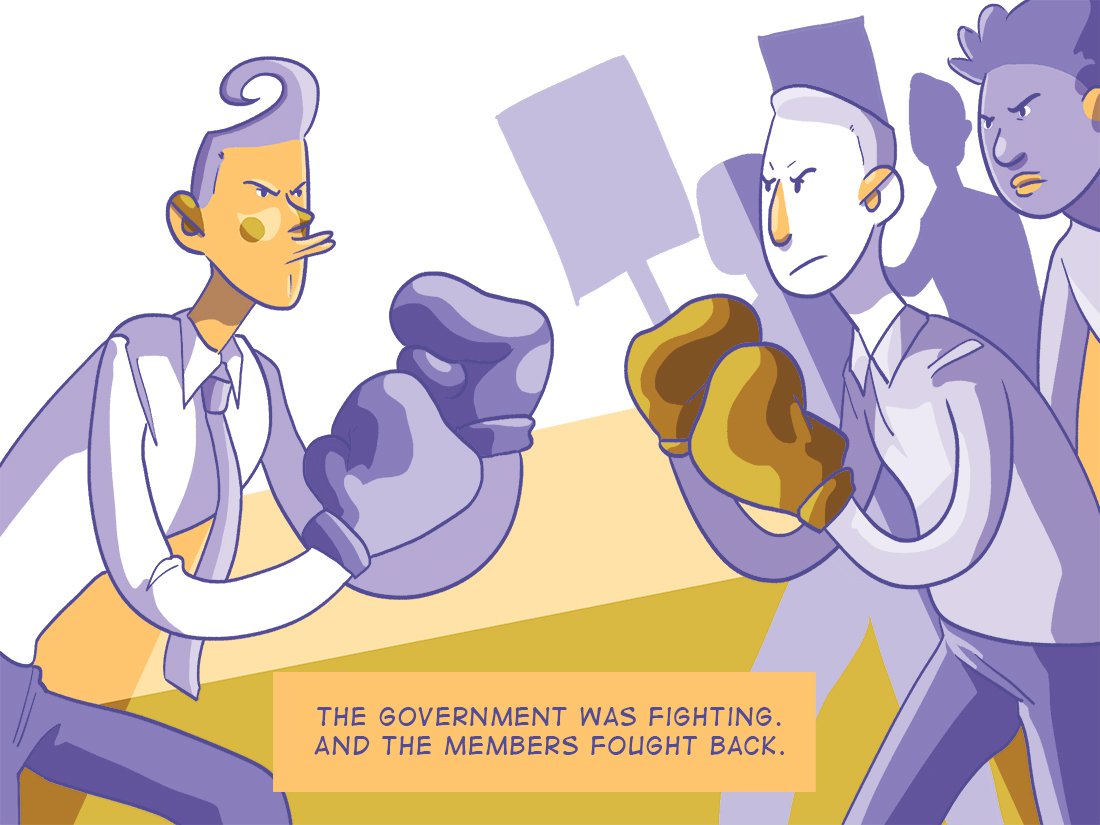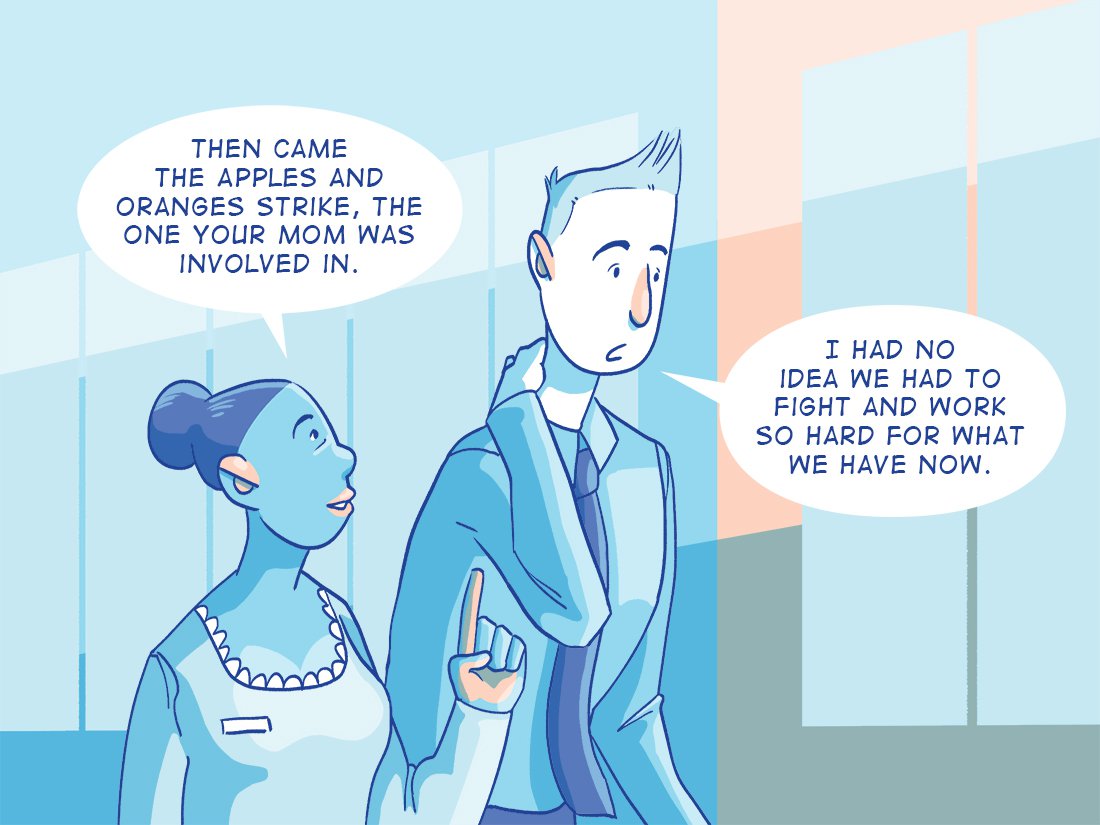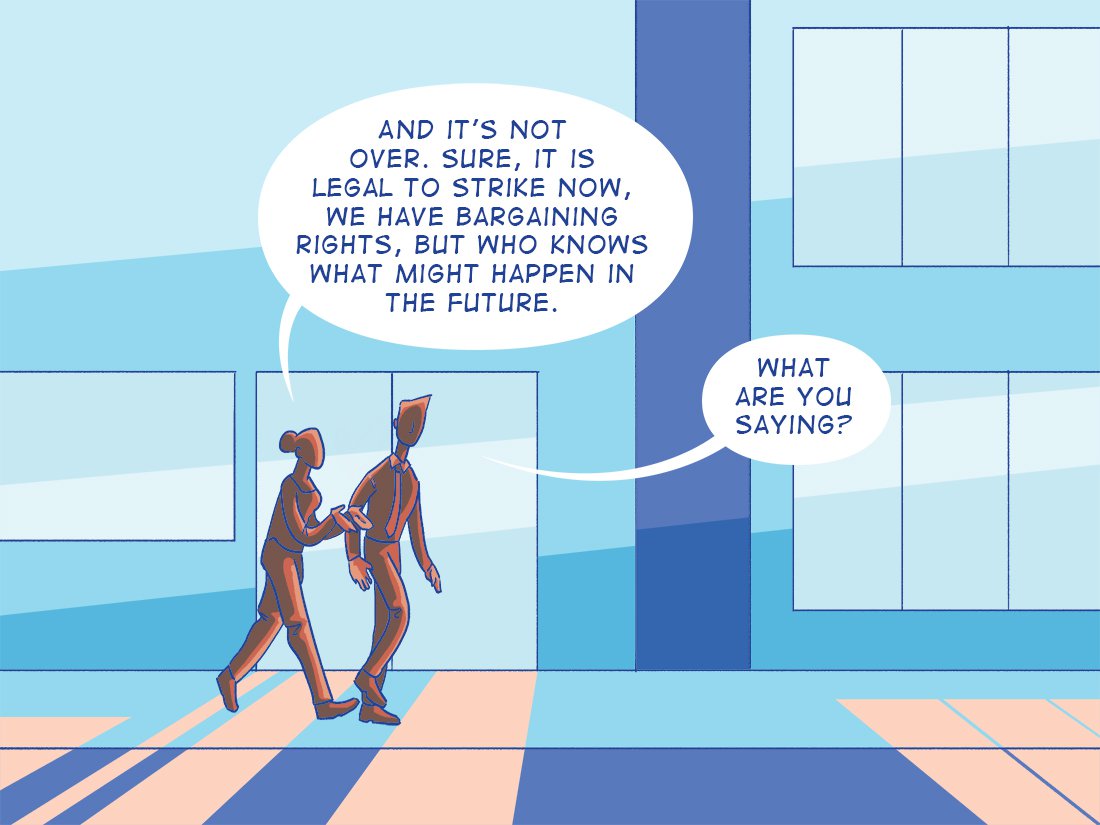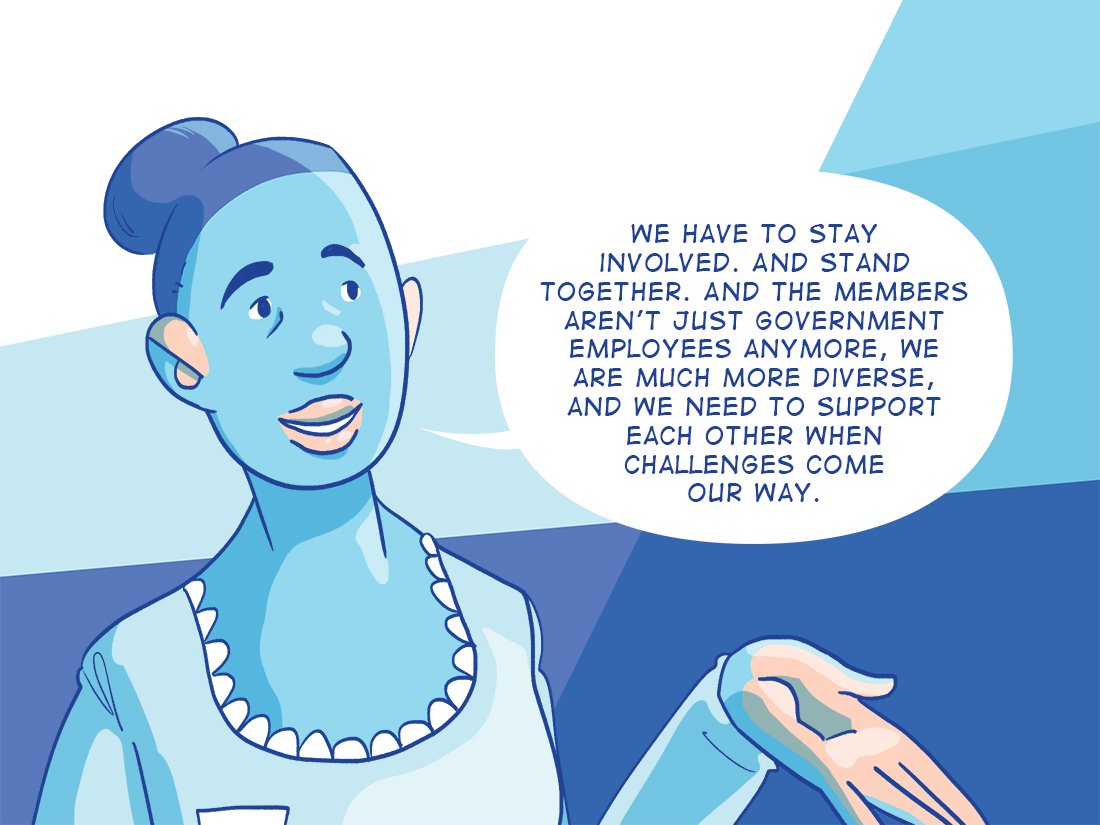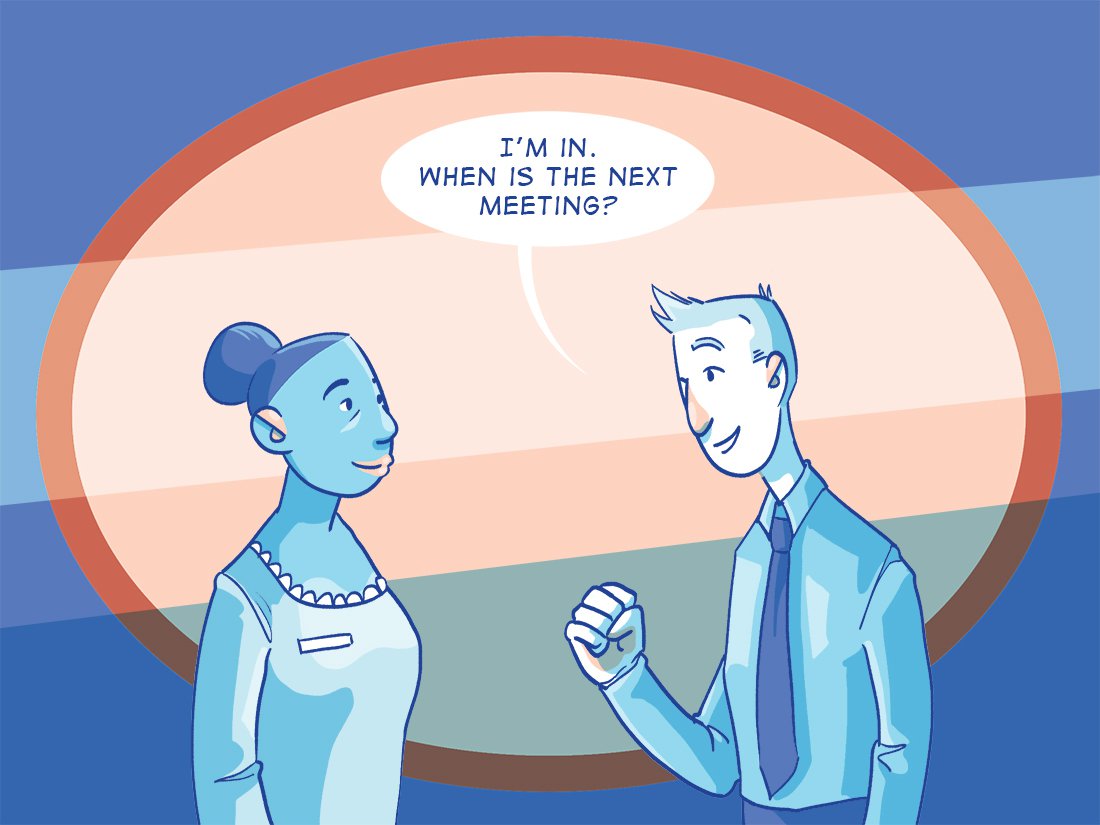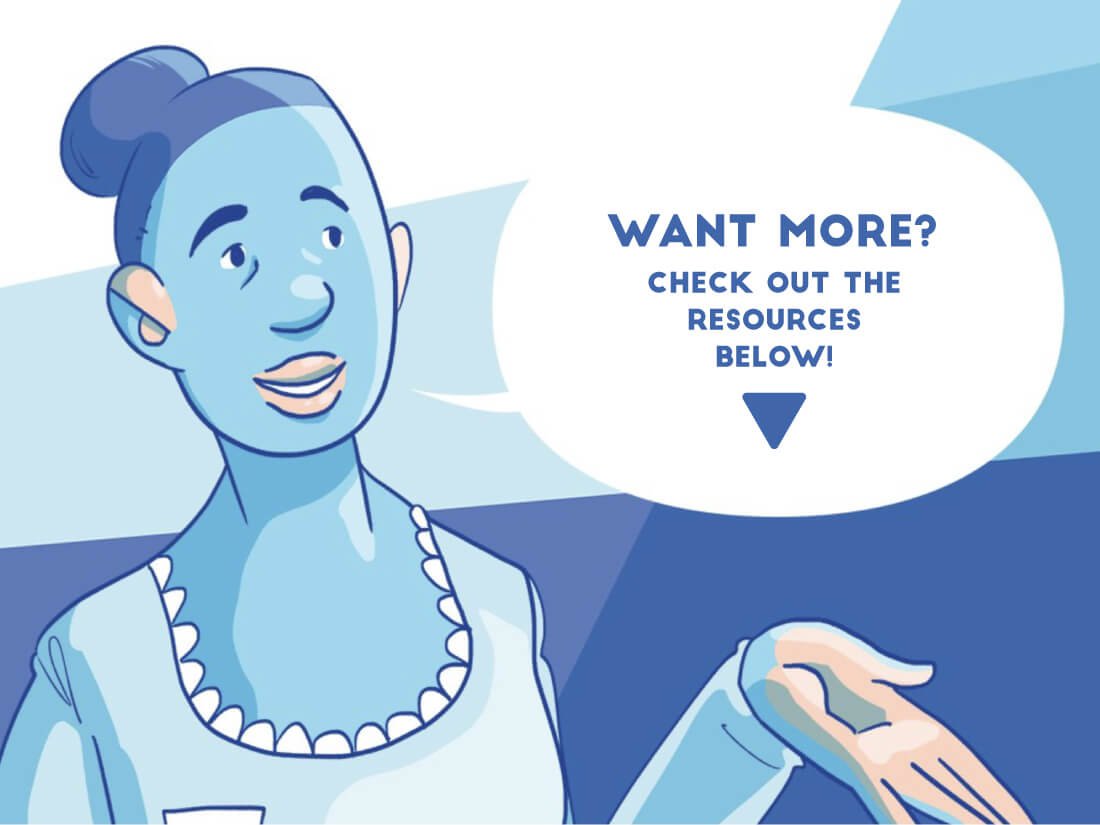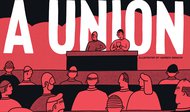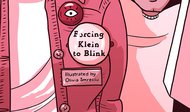Related Resources:
AUPE’s three-week apples and oranges strike in July 1980 surprised everyone, except the members who walked.
It happened four years after AUPE was born and three years after the Alberta government passed the most regressive piece of labour legislation in Canada at the time. Not only did the Public Service Employees Relations Act (PSERA) ban strikes by provincial government employees and others in its jurisdiction, it also excluded thousands of workers and set up a system of interest arbitration rigged against the union.
AUPE members felt especially deceived. After Lougheed promised in 1971 that, if elected, he would grant provincial employees the same bargaining rights as other workers. By 1979, frustrations peaked and the union’s convention that year pledged to make the upcoming term a test for negotiations.
AUPE held strike seminars and kicked off a massive information campaign across Alberta. Soon after convention, Alberta’s finance minister issued “guidelines” limiting wage increases in negotiations to between 7.5 and 9 per cent.
When asked how he could justify limiting wage increases for public employees when MLAs awarded themselves a 47-per-cent wage increase, he answered it was “comparing apples to oranges.”
That quip would haunt the government. Over 3,000 “apples” went on strike, aware their actions were illegal. It began with 186 Alberta Liquor Control Board workers walking out, soon followed by 1,000 correctional officers at nine sites. Almost 2,000 clerical and administrative support staff walked out from the law courts, land titles, motor vehicles and the Alberta Health Care Insurance Commission on July 16.
The walkouts were strategic, limited to places where they would have maximum impact. Lawyers and real estate agents were apoplectic. The RCMP was over-extended in the prisons and the legal system was all but stymied.
Members’ determination became clear when courts began to issue injunctions in the second and third weeks of the strike. Most picketers refused to accept, and injunctions were dropped at their feet.
AUPE staff and members stood together on the steps of the Edmonton courthouse, clapping hands and chanting support slogans, while a riot squad assembled across the street.
The “apples” won that strike. Not only did they achieve wage increases in excess of the government guidelines, but the union also disputed a bad law.
In 1987, AUPE challenged PSERA in the Supreme Court but was unsuccessful. However, in 2015 the court reversed its stand, laying the basis for Alberta’s Bill 4. It took 40 years, but AUPE members now have the same bargaining rights as most other workers in the province and public sector workers across the country.
